- Pontoon Boats
- Personal Watercraft
- nauticalknowhow
- Nautical Knots
- Tools and Calculators

What are the Different Classes of Boats?
Classes of boats and types of boats are two different things. Every type of boat fits into one of four classes of boats. While a type of boat can vary significantly in appearance and function, class is easy to understand. Boat classes are all determined by the overall length of the vessel.
The class of a boat is significant for you as a boat owner. Boats classes are required to meet certain safety guidelines based on those classes. The size of your boat determines what you need to keep on board. Let’s take a look at the different classes of boats. We’ll also get into different types of boats and see where they fit in terms of class.
Class A Boats
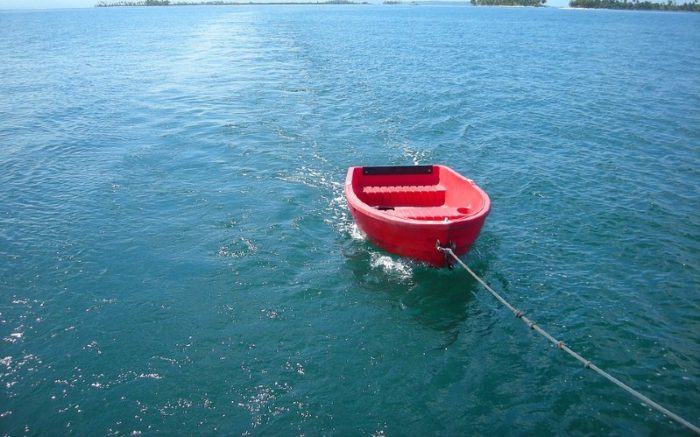
Any boat that clocks in at under 16 feet in length. That means it could be:
- a fishing boat
- A personal watercraft
- An inflatable boat
Recreational boats that are less than 16 feet in length are not required to carry any day signals on board. That said, there are safety requirements. These are regulated by the US Coast Guard. It’s also worth noting that these regulations are slightly different for canoes and kayaks.
Canoes/Kayaks Under 16 Feet
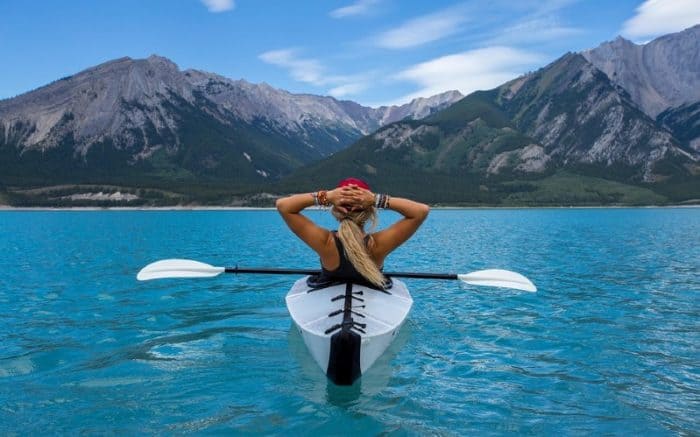
For these vessels, a Type I, II, III or V personal flotation device must be available for every person on board. These need to be US Coast Guard approved flotation devices. They need to be the right size and wearable by the person who plans to wear them as well. If the person is not wearing it, it needs to be someplace they can reach it easily. We recommend anyone on a boat of this size keep their flotation device on at all times. The minimum requirement is that one be available and easy to reach. In an emergency, you can save yourself precious time by having it on already. This is especially true for children on boats.
Visual distress signals are required on the vessel if it’s being operated at night. Your night signal has to be made within the last 42 months as well.
Sound devices are required as well. A whistle is recommended but a horn will work also.
Other Boats Under 16 Feet
All boats under 16 feet require the same personal flotation devices. The rules for a kayak or canoe apply here as well. One for everyone on board that is accessible and wearable. A distress signal is also required for these boats. Sound signals are the same as for kayaks and canoes as well.
There are additional requirements for these kinds of boats if they meet certain conditions.
A B-1 fire extinguisher of any type must be on board any vessel under 16 feet besides a canoe or kayak. That is, if it has an enclosed engine, enclosed living space, or a permanent fuel tank.
A type I, II, or III Marine Sanitation device is required if the vessel has an installed toilet.
A backfire flame arrestor is required if the vessel has a gasoline-powered engine. The exception is if it is an outboard motor.
Enclosed engines must also have ventilation that meets Coast Guard standards.
Class I Boats
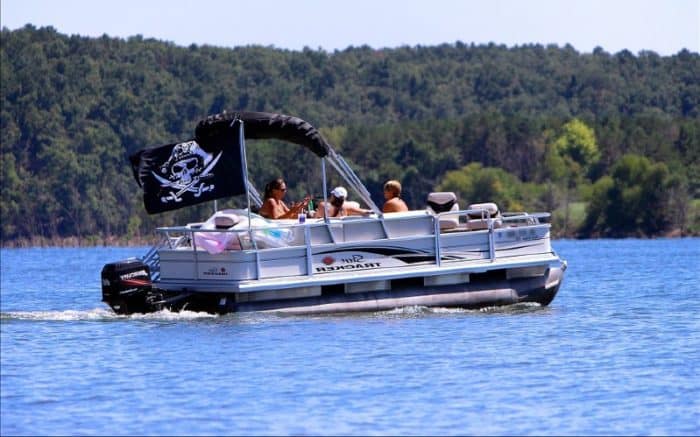
Boats that are between 16 feet and 26 feet fall under this classification. Any number of boats could fall into this class.
- Smaller deck boats
- Cuddy cabin boats
- Pontoon boats
- Aluminum fishing boats
- Wakeboard boats
All Class I boats must have one personal flotation device of Type I, I, III or V per person on board. In addition, one throwable Type IV device is required to be on board. Often people overlook these on tow sports boats. They will only think of the person looking for a thrilling ride water skiing as the one who needs a PFD. The Coast Guard requires them for everyone, however.
A B-1 fire extinguisher of any type is also required to be on board. This is true, again, if the engine is enclosed. It’s not required for outboard motor boats. However, as before, if there is an enclosed living space or permanent fuel tank, then you do need a fire extinguisher.
This size of boat requires specific distress signals. You need a minimum of three day use and night use flares. You can also have a non-flare substitute for day use in the form of an orange distress flag. A Non-pyrotechnic substitute for night use is an electric SOS light. Flares must have been made within the last 42 months.
A horn or whistle is needed as a sound signal.
Class II Boats
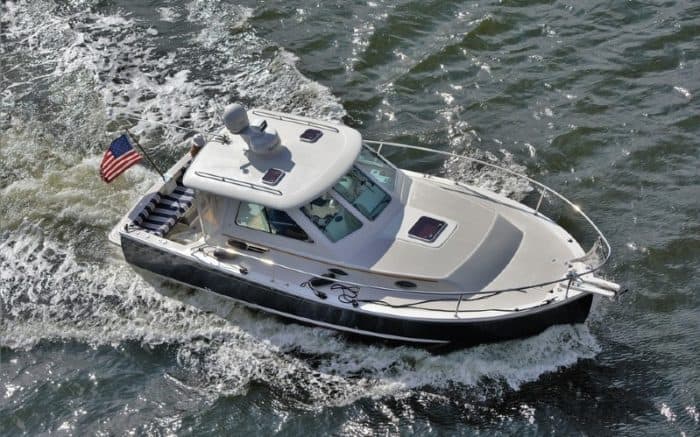
Class II boats are any vessel that span 26 feet to 40 feet. This can include
- Cabin cruisers
- Bowrider boats
- Trawler boats
- Runabout boats
These boats meet the same requirements for PFDs as Class I boats. That means every single passenger on board needs to have access to their own life jacket or other PFD. The acceptable types are Type I, II, III and V. And again a throwable Type IV is also required. These recreational boats can easily hold over one dozen people. Even if you’re freshwater fishing in shallow waters, these requirements must be met.
At this size, either one B-II fire extinguisher or two B-Is are needed. Remember, marine plywood isn’t able to stand up to fire well at all. The extra extinguishers could be a lifesaver at this size of a boat. Nothing ruins some relaxed cruising faster than a boat fire.
Visual distress signals on this kind of boat are the same as those for Class I boats. That means three day use and three night use. Three combination day and night use signals are also acceptable. These are essential for any overnight trips on the boat. Even high performance boats can run into troubles in the dark. Make sure any signal flares have been manufactured within the last 42 months.
Sound devices must be present as with lower boat classes.
Enclosed engines must also have ventilation that meets Coast Guard standards
This class of boat is also required to have pollution regulation placards. Your boat will need a 5″ x 8″ Oil Discharge placard and 4″ x 9″ Waste Discharge placard.
Class III Boats
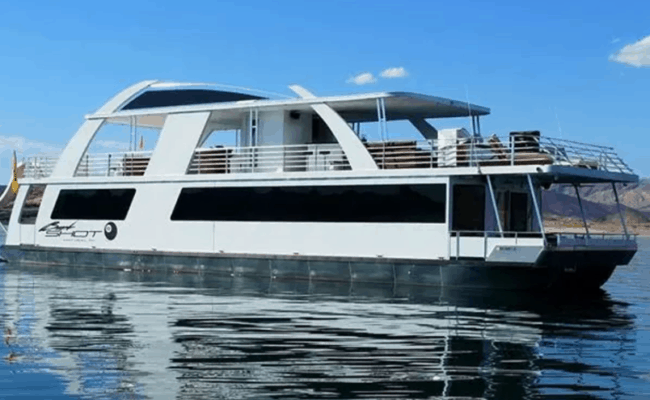
These boats range from 40 feet to no more than 65 feet in length. This can include
- Cigarette boats
- Sport fishers
These are the largest class of boat available to typical boat owners. For these, the same flotation device standards apply as they did for Class II. That means one PFD of Class I, II, III or V is required for every passenger on board. Since different types of boats can carry passengers in greater numbers, this needs to be respected. Make sure every single person knows where the PFD is and how to wear it. Each person must have one that fits properly.
In terms of fire extinguishers, the rules change again with Class III boats. You will need one B-II extinguisher and one B-I extinguisher on board. Alternatively, you could have three B-I extinguishers handy.
Visual distress signals and sound signals are the same as the requirements for smaller class boats. That means three day use and three night use signals. An orange signal flag may substitute one of the day use flares, and an electric SOS light can substitute for one of the night use. A horn or whistle is also required.
This class of boat is also required to have pollution regulation placards. Your boat will need a 5″ x 8″ Oil Discharge placard and 4″ x 9″ Waste Discharge placard. If the vessel has a galley then it must also have a waste management plan.
At this length, the boat must also have the Inland Navigation Rules on board. This is the “Rules of the Road” that govern boating.
Boats Over 65 Feet
Some yachts and things like a ferry boat can easily be over 65 feet. These no longer qualify as subject to small boat regulations. Typically no one is going to own a personal watercraft of this size. The Coast Guard does have regulations in place if you are on a large vessel such as this, however. These apply to vessels from 65 feet up to 165 feet. After that, vessels are typically considered research, commercial, or military.
The rules regarding flotation devices remain static here. One Type I, II, III or V PFD for every passenger on board. In addition, one Type IV throwable device. It’s worth noting there that the “Type” system will not be around forever. The Newton system is slowly being phased on. Newtons measure pounds of force and help indicate how much a PFD can keep afloat. This buoyancy rating in Newtons has been in place since 2019. The transfer is going slowly to allow people time to adjust. Most PFDs you purchase now will explain buoyancy in Newtons.
For instance, a Type II flotation device is equivalent to a current PFD that is rated for 70 Newtons. This device should be able to keep most people floating face up in the water. Type III devices will be replaced with 70 Newton rated PFDs that do not turn you face up. Each device has a Newton rating plus icons. These explain how much weight the PFD is meant to keep you afloat and how it floats you. In several years time, all PFDs will follow these guidelines. That said, old PFDs are still perfectly legal and usable.
For fire extinguishers, weight becomes a factor at this size. Vessels that weigh up to 50 gross tons need one B-II extinguisher. Over 50 gross tons requires two B-II extinguishers on board.
Visual and sound signals are the same for the previous class of vessels. This class does have a variation in sanitation requirements, however. A Type II or Type III marine sanitation device is required for this size of a vessel.
Additional requirements are the same as for the previous class. This includes sanitation and ventilation. The backfire flame arrestor must meet the same requirements as well. A copy of the inland navigation rules must also be on board the boat at all times, also.
What Class are Fishing Boats?
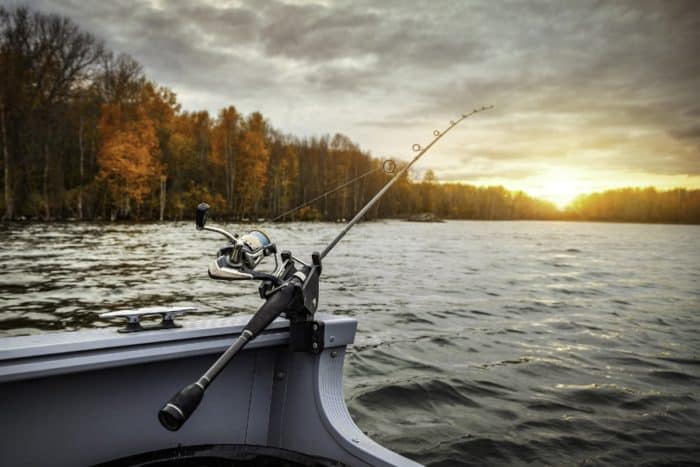
There are dozens and dozens of kinds of boats in the world. You have banana boats, log boats, bass boats and so many more. That’s why the class system is broken down by length. It makes it much easier to categorize a boat in these simple terms rather than trying to manage each type individually.
As a result, something like a fishing boat does not necessarily fit into one class. Your fishing boat could easily fit into literally any one of these classes. Remember, a fishing boat is not even technically a specific kind of boat. A fishing boat is just a boat from which you go fishing. A pontoon boat or some high performance boat could be a fishing boat. An inflatable dinghy could be a fishing boat. There is no standard for that particular description of a boat.
Does a Fishing Boat Need All The Same Safety Gear?
Some people question the application of safety standards. A Class I boat that only has one person on board seems different than one with ten people on board. But the rules are adaptable. If you are the only passenger on the boat then you only need one flotation device. You only need the fire extinguisher if your boat meets the requirements for it. That means something other than an outboard motor.
Man powered boats do not require the same level of safety and concern that power boats do. That’s why canoes and kayaks are exempt from requiring a fire extinguisher. After all, what would be the point? But just because your boat doesn’t have a swim platform or whatever doesn’t matter. Smaller boats or bigger boats all have the same potential to get into trouble. These rules are meant to help prevent that as much as possible. What About Pontoon Boats and Deck Boats?
No matter what kind of boat you’re on, the Coast Guard requirements apply evenly. Again, this can sometimes seem unnecessary. Something like a ski boat may seem more dangerous than cruising around on a deck boat. If you’re just relaxing on inland waters trying to catch largemouth bass, it can seem like overkill. But these measures are designed to ensure safety. In fact, these are the minimum requirements that the Coast Guard has implemented.
Some boaters prefer to have additional measures in place. For instance, as we said above, we recommend wearing a PFD at all times. This is not specifically required, only that the PFD be wearable and accessible. We feel that, the more people on board a boat, the more important it is to make sure everyone is wearing a PFD. This can cut down on wasted time and confusion if an accident happens later. If everyone scrambles for a PFD at the same time, a bad situation could easily become worse.
The Bottom Line
Boat classification has no effect on how you enjoy your boat. It also doesn’t change what you are allowed to do on your boat. The only purpose of classifications is to account for safety on board. Larger boats need to take more care in keeping the boat and passengers safe. Understanding the requirement is key to ensuring the safety of everyone on the water. Make sure you know the full dimensions of any boat you plan to take out onto the water. Once you are aware, you should always do a pre-departure check of the boat.
It’s important to know if you have all the safety gear every time you head out. Make sure the personal flotation devices are all in good working order. Check the date on all flares or visual signals to make sure they meet requirements. Also, check the date on your fire extinguishers before heading out as well. Old gear should be replaced immediately. It’s better to have it and not need it than to need it and not have it.
Keep yourself and your passengers safe and you’ll be having a great time on the water.
My grandfather first took me fishing when I was too young to actually hold up a rod on my own. As an avid camper, hiker, and nature enthusiast I'm always looking for a new adventure.
Categories : Boats
Leave a Reply Cancel reply
Your email address will not be published. Required fields are marked *
Save my name, email, and website in this browser for the next time I comment.
More in Boats

What Is A Gunwale?

131 of the Best Hawaiian Boat Names

167 Patriotic Boat Names

The 138 Best Boat Names for Dog Lovers

The People’s Poncho Review and Ratings

Oru Lake Kayak Review

About Boatsafe
Established in 1998, BoatSafe is your independent guide into the world of boating, fishing, and watersports. We provide expert insights and detailed guides to help you find products tailored to your needs and budget.
Contact Boatsafe
- Address: 4021 West Walnut Street. Rogers, AR 72756
- Phone: (479)339-4795
- Email: [email protected]
Site Navigation
- How We Test
- Corrections Policy
- Privacy Policy
- Terms & Conditions
- Editorial Policy
- Affiliate Disclosure
Our Reviews

All content is © Copyright 2024. All rights reserved.
Ita Yachts Canada
Brokerage / Courtage
Understanding the Classification of Yachts A, B, C and D
Understanding the Classification of Yachts A, B, C and D:
Since 1998, Europe (EEC) classifies yachts according to 4 categories A or B or C or D and this is a law. In order to sell a boat in the large territory of the EEC, it must be classified with a plate that mentions its classification and it must be clearly visible inside the boat, usually near the helm.

At first glance, it sounds very good when you hear class A, but what is it really, what are the differences, is it necessary to acquire a class A…
The brokers at ItaYachtsCanada have written an article on this subject in the past ( click here ), but here are the important characteristics to know about the subject.
The classification allows you to know in which kind of sea intensity you can safely venture, that is to say, taking into account the wind and the wave height in reference to the Beaufort index.
(At the end of this text, there is an explanation of the classes according to the Beaufort index).
Let’s say we focus on class A and B, on the major differences.
First of all, the differences are not very visible to the naked eye or it takes a trained eye to see them.
Depending on the type of water you plan to sail and if the weather guides you on each trip, a B class is also a very good choice.
Of course, you must have all the required safety equipment on board.
Ideally, a boater should always sail in rather peaceful conditions, taking into account the weather first. We always say that boating is fun, so stay away from difficult sailing situations. (Ideally, always with a Beaufort index of 6 and less, ideally a Beaufort index of 4 and less).
Many manufacturers have retained the parameters of the B class to build their boats, mainly for reasons of production costs and that boaters in general do not care much about these characteristics.
The problem is how to differentiate between the vast range of B class boats, how to distinguish those that are closer to an A class (B +) from those that are built as (B -).
How to find your way around, especially for a layman…

It is important to know that some manufacturers build their boats with an A approach, but without respecting all the mandatory specifications to be classified A.
Here are some guidelines to quickly see if the manufacturer has done things right.
– Inspect the portholes and closing mechanisms (Plastic or Metal)
– The presence of numerous drains to evacuate water (at the fly and cockpit), it is essential to be able to evacuate any water accumulation quickly.
– Height of the freeboard.
– Engine access hatch, well insulated and secured for water leaks.
– Bilge pumps (number, size and capacity)
– Mechanism to pump water from the engine room massively (e.g. possibility to use the engine water pumps with a joystick)
– The center of gravity of the boat is well balanced (rather low).
Hull joints, a very low center of gravity, excellent weight distribution, electrical system (24 V), are also part of the certification criteria especially for A boats, but difficult to assess for a yachtsman. It is possible, but in a summary way.
The CE classification allows to differentiate yachts according to certain criteria present, we are talking mainly about structural strength, integrity of essential parts of the hull, reliability of propulsion, steering systems, power generation and all other features installed on board to help ensure the essential services of the yacht.
Therefore, it is important to understand that a Class A yacht is built to a much higher standard than a Class B. This is not reflected in the luxurious appearance of the boat.
What you have to remember is that the major enemy for a boat, besides a fire, is water infiltration on board which can destabilize the behavior of the boat, cause a stop of the engines, major electrical problems, in short which can quickly put the boat out of use and/or out of control.
A classification body such as RINA (see list at the end of this text) has been checking the activities of builders and classifying yachts for over 20 years.
If the boat is sold in the European Community, the classification is mandatory and must be visible near the cockpit. This same classification is not present when the boat is intended for North America or very rarely.
Do not hesitate to contact a professional broker, he will be able to guide you according to your needs, your criteria and especially the places of navigation.

As the CE classification is not always displayed when the boat is destined for the North American market, here are some references on this subject based on the most recent data available (subject to change without notice):
P.S. Let’s mention that as a general rule yachts over 80 ft are Class A, but according to the rules in place, the classification is no longer mandatory or mentioned beyond 79 ft.
Class A (yachts over 50 ft):
BEST KNOWN MODELS :
Ferretti 500, 550, 670 and up
Pershing : 7X and up
Azimut 62, 64, 66, 68 Fly and up
Azimut S8 and up
Azimut Magellano : the whole range
Sunseeker Sport yacht 65, Yacht 88 and up
Princess yacht 80 and up (TBC)
Marquis Yachts (no longer in production)
Montecarlo MCY 66 and up
Searay L650
Class B (yachts over 50 ft):
Sunnseeker 52 fly, 55 fly , 66 fly, 68 fly, Sport Yacht 74, 76 Yacht
Azimut 50 fly, 55 fly, 60 fly, S6 and all Atlantis
Princess : all yachts under 70 ft
Princess Y72, Y78 and less
Ferretti 580 fly
All Absolute
All Fairline
All Beneteau & Jeanneau & Monte Carlo 52
All Searay except L650.
All Cruisers Yachts
For more information, here is an article published by the brokers at ItaYachtsCanada, click here .
There is also the dry weight which can help determine a quality yacht.
Don’t hesitate to compare yachts of the same size based on dry weight, you may be surprised.
For example, a 52′ yacht that weighs 30,000 lbs empty compared to another one that weighs 60,000 lbs empty, ask yourself some questions.
But be careful, it is more and more difficult to get the manufacturers’ empty weights. They have understood the importance of being rather vague on the subject or of making comparisons more difficult. Indeed, we are talking about LIGHT WEIGHT, which is difficult to measure.
The manufacturer who has confidence in thier boat will have no difficulty in giving a total warranty of at least 12 months, 24 and even 36 months. Please note the difference here between the manufacturer’s warranty and the dealer’s warranty .
Many European manufacturers sell their boats to dealers in America without a warranty. This means that the dealer assumes the full 12-month warranty out of his profit from the sale. The engine manufacturer, on the other hand, honors its own warranty such as Volvo, Cummins, Caterpillar, MAN, MTU, Yanmar. For other major components, it will be up to you to take the necessary steps to have the warranty honored, such as for the generator, the air conditioning, the thrusters, etc…

Therefore, acquiring a boat requires a much more specialized expertise than that of a car! Contact ITA Yachts Canada Inc. to speak with a professional and independent broker with experience in the following markets (Canada, United States and Europe whether the boat is new or used).
MORE INFORMATION.
Here is some more information about the classification, what the law in Europe says about it.

Here are some links to help you understand the Beaufort index in direct relation with the classification of yachts sold on the territory of the EEC:
Click here for the TRANSPORT CANADA website
Click here for an article on Wikipedia (more descriptive with photo).
According to the EEC rules, here is the description:
The classification of vessels marked “CE
CE marked vessels are classified into four design categories according to their ability to cope with sea conditions characterized by wind speed and significant wave height. Depending on the type of navigation practiced, the boater must choose a vessel whose design category authorizes such practice.
– Design Category A: Recreational vessels designed for winds that can exceed force 8 (on the Beaufort scale) and for waves that can exceed a significant height of 4 meters, excluding exceptional conditions such as storms, severe storms, tornadoes and extreme sea conditions or huge waves (these conditions exclude force 10 and following).
– Design Category B: Pleasure craft designed for winds up to and including force 8 and for waves up to and including 4 meters in significant height.
– Design Category C: Pleasure craft designed for winds up to and including force 6 and for waves up to and including two meters in significant height.
– Design Category D: Pleasure craft designed for winds up to and including force 4 and for waves up to and including 0.30 meters, with occasional waves up to and including 0.50 meters.

Vessels in each of these design categories shall be designed and constructed to withstand the parameters of each of these categories, with respect to buoyancy, stability and other relevant requirements, and to have good maneuverability characteristics.
The known classification bodies for the EEC:
RINA (Registro Italiano Navale),
BV (Bureau Veritas),
DNV (Det Norske Veritas),
Germanischer Lloyd,
LR (Lloyd’s Register).

Ita Yachts Canada provides the information in this article in good faith but cannot guarantee the accuracy of the information or the status of the data. It is the responsibility of the reader to instruct their agents or experts to verify and validate the information in this article.
Share this:
Published by Guy Bolduc
View all posts by Guy Bolduc
Leave a Reply Cancel reply
Discover more from ita yachts canada.
Subscribe now to keep reading and get access to the full archive.
Type your email…
Continue reading
- CATAMARAN MOTEUR
- CATAMARAN VOILE
- CENTER CONSOLE
- FISHING BOAT
- SPORT BRIDGE
- ABSOLUTE YACHTS
- CRUISERS YACHTS
- FOUNTAINE PAJOT
- GRAND BANKS
- KADEY-KROGEN
- MOCHI CRAFT
- MINIGHT EXPRESS
- MONTE CARLO
- NORTHERN MARINE
- OCEAN ALEXANDER
- OUTBACK YATCHS
- PARDO YACHTS
- PRESTIGE YACHTS
- SILENT YACHTS
- $1,5 M to $2,9 M
- $3,0 M to $4,9 M
- $5,0 M to $6,9 M
- $7,0 M to $9,9 M
- $10,0 M and more
- UNDER 49 FEET
- 50 to 59 FEET
- 60 to 69 FEET
- 70 to 79 FEET
- 80 to 89 FEET
- 90 to 99 FEET
- MORE THAN 100 FEET
- CENTRAL AMERICA
- PERSIAN GULF
- UNITED-STATES OF AMERICA
- YACHTS REGISTERED UPDATED
- VIRTUAL TOUR 3D
- YACHTS FOR SALE
- IMPORT-EXPORT
- BLOGUES, NOUVELLES ET CONSEILS
- PODCAST VIDEO

CE Yacht Compliance Classification
29 March 2016
The CE Yacht Compliance Classification System is the European (CE stands for “ Conformité Européenne ” in French) dictating the standards for CE Certification for construction and sale of boats . Vessels in one of the categories of controlled products cannot be legally sold in the EU unless they have passed the tests to receive the CE Certification. This regulation applies to all yachts for sale and recreational craft from 2.5 to 24 meters, whether they are intended for navigation at sea or in inland waters. New or used boats coming from countries other than the Member States of the European Union are also subject to CE marking.
In 1994, the countries in the European Union adopted the Recreational Craft Directive (RCD), which they amended in 2003. This constitutes a single set of “harmonized” essential requirements for boats sold in any member country.
The compliance with the RCD is required by law in the European Union member countries, and third-party classification societies inspections and their certifications are required as part of the process of CE yacht compliance classification. Boats are given a CE certification at the end of the process, which confirms that they have passed and comply with the technical, construction, safety and legal requirements making them legally valid for sale in the European Union. In Europe, we call them commonly “CE compliant boats” .
CE certification required
Summary of the origin and CE yacht compliant classification and how certification works.
Since 1998, European legislation indicates that pleasure boats must carry the CE certification (or mark), requiring them to meet certain construction and safety standards. For this, the boats are classified into four categories according to their design and skills to face different sailing conditions depending on the wind force and wave height.
Knowing that the weather is a variable phenomenon, these categories are not intended to limit the distance boaters can sail away (this depends on onboard safety equipment), but rather to responsibly inform them about the capabilities of their boat to safely navigate based on the offshore weather conditions. For each vessel, the design category is characterized by a letter between A and D.
BEAUFORT scale
First, let’s start with the BEAUFORT scale. This scale gives you the status of the sea in order to plan your trips. It was the British admiral Francis BEAUFORT who imagined a scale with sufficiently precise criteria to quantify the wind at sea and allow the divulgation of reliable information universally understood. This scale consists of 13 degrees, from 0 to 12, which is remarkable in this scale is that it can assess the effect of wind on the surface of the sea.
We will focus on the scale with the forces of 6, 7 and 8 to our need for explanations. There is indeed a direct link between the Beaufort scale and the certification of yachts (see photo above of the scale to better understand the graduation of wind forces).
- CE CLASS A yachts are designed for large sea voyages (everywhere), in which wind force may exceed 8 on the scale of BEAUFORT and waves can also exceed a significant height of 4 meters. These yachts are designed largely to be self-sufficient in this rather hostile environment. CAREFUL, in most cases, this is only theoretical.
- CE CLASS B yachts are designed to travel off the coast (200 miles or less) in which the winds can be up to force 8 (not exceeding) and waves can reach a height up to 4 meters (not exceeding).
- CE CLASS C boats are designed for travel close to the coasts and in large bays, estuaries, lakes and rivers in which winds can be up to force 6 (not exceeding) and waves may reach a height of 2 meters (not exceeding).
- CE CLASS D boats are designed for cruises in protected waters, like small lakes, rivers and canals in which the winds can be up to force 4 and waves can reach a height up to 0.30 meter (less than 1 foot).
Rules of CE certification
The rules of CE certification for construction and sale of boats are designed to assess the structural strength and integrity of essential parts of the hull, the reliability, and function of propulsion, steering systems, power generation and all other features installed on board to help ensure the key essential services of the yacht.
You understand therefore that a CLASS A yacht respects a much more rigorous construction protocol than a CLASS B yacht and so on… Of course, it is strictly advised not to sail past a force 6 for pleasure yachting and no matter the class A or B. This is a matter of safety, comfort and pleasure being always present in your cruise.
To ensure recreational boating, always check the weather before each ride at sea and especially verify any potential changes every hour. In addition, you must always carry the safety equipment onboard depending on the type of navigation that you practice and the laws and regulations in the countries where you cruise, and feel free to be overcautious.
It is obvious that in case of bad weather, for example, it is better to find yourself onboard a CLASS A yacht, which will necessarily have a better safety margin, regardless of sea conditions… Before buying a new or pre-owned boat , always ask for the classification of your future yacht, this document is required for the new registration (in Europe).
A CE-Type Certificate (or homologation) is generally issued for production vessels manufactured in series by different shipyards , particularly European.
There are several classification societies capable of achieving the CE classification for construction and sale of boats , the main ones are RINA (Registro Italiano Navale), BV (Bureau Veritas), DNV (Det Norske Veritas), Germanischer Lloyd, LR (Lloyd’s Register).
Other societies and certifications
There are also other classification societies for vessels built or sold outside the EU such as ABS (American Bureau of Shipping) and NK (Nippon Kaiji). There are also other types of certifications such as the MCA (UK – Maritime and Coastguard Agency), which however is not a classification organization. We will write more articles on commercial classifications later.
Do not hesitate to contact us for any need for further information on the CE yacht compliance classification , our team at Allied Yachting is at your service.
Contact us if you have more questions
Your Name (required)
Your Email (required)
Please leave this field empty.
Your Phone (required)
Your Message
Our Yacht Listings:
- New Yachts for Sale
- Pre-owned Yachts for Sale
- Yachts for Charter
You might also like
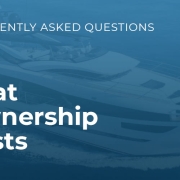
Yachting Consultants
Sale-Charter-Brokerage-Management
Headquarters:
34 Rue Caffarelli 06000 Nice, France
Front Office:
Boulevard de La Croisette – Port Canto 06400 Cannes, France
T.: +33 493 43 82 83 Email: [email protected] Website: www.alliedyachting.com


The global authority in superyachting
- NEWSLETTERS
- Yachts Home
- The Superyacht Directory
- Yacht Reports
- Brokerage News
- The largest yachts in the world
- The Register
- Yacht Advice
- Yacht Design
- 12m to 24m yachts
- Monaco Yacht Show
- Builder Directory
- Designer Directory
- Interior Design Directory
- Naval Architect Directory
- Yachts for sale home
- Motor yachts
- Sailing yachts
- Explorer yachts
- Classic yachts
- Sale Broker Directory
- Charter Home
- Yachts for Charter
- Charter Destinations
- Charter Broker Directory
- Destinations Home
- Mediterranean
- South Pacific
- Rest of the World
- Boat Life Home
- Owners' Experiences
- Interiors Suppliers
- Owners' Club
- Captains' Club
- BOAT Showcase
- Boat Presents
- Events Home
- World Superyacht Awards
- Superyacht Design Festival
- Design and Innovation Awards
- Young Designer of the Year Award
- Artistry and Craft Awards
- Explorer Yachts Summit
- Ocean Talks
- The Ocean Awards
- BOAT Connect
- Between the bays
- Golf Invitational
- Boat Pro Home
- Superyacht Insight
- Global Order Book
- Premium Content
- Product Features
- Testimonials
- Pricing Plan
- Tenders & Equipment
Classification: Statutory certification explained
Is certification an unnecessary complication, the costs and hassle of which far outweigh the benefits, or a helpful and reassuring framework which sets the highest standards for structural and operational safety and safeguards life, property and the sea environment?
No one could possibly deny that the large yacht industry is, and has been for some time, in the throes of a boom in spite of a recent downturn since 2008. Some observers would suggest that this is in spite of all the new rules and regulations that seem set to dog the yacht owner’s every move. Others would suggest that it is through the introduction of rules and regulations such as the MCA’s Code of Practice for Safety of Large Commercial Sailing and Motor Vessels that the industry has been given the confidence to expand with such vigour, knowing that their investments are safer – both financially and physically – because of regulation.
Classification societies are non-governmental organisations or groups of professionals, ship surveyors and representatives that develop, publish and certify standards and technical rules to ensure an acceptable degree of stability, safety and environmental impact, among other things. They are authorised to certify yachts and vessels flagged virtually anywhere.
A classification certificate attests that the yacht complies with the standards developed and published by the issuing society
New construction and refit surveys carried out by a surveyor from the classification society under which the yacht is built are important inspections that take place at intervals throughout the duration of the project. They ensure that any and every installation, repair, upgrade or modification is carried out to the standards of that society. Classification surveyors are interested in the structural integrity of the hull, installation of equipment, stability, structural, engine and machinery surveys, electrical, electronic and ancillary equipment, rigging inspections, safety recommendations and ultrasonic thickness gauging.
Every owner has his own vision of what he wants his yacht to be and designers strive to deliver just that. The fulfillment of this vision in turn becomes paramount in the eyes of the building yard and others who represent the owner, so it is often the policies imposed in the form of building regulations and classification rules that act as the voice of reason. This ultimately allows a balance to be struck between the attainment of that vision and the safety and reliability embodied in the construction of a yacht built to class.
A classification certificate attests that the yacht complies with the standards developed and published by the issuing society. Periodic surveying of a yacht in service by the appropriate class surveyor, at intervals dictated by the appropriate classification society, is also required to ensure the vessel continues to meet the rules and thus maintain her in-class status. Should any defects that may affect class become apparent, or if damage is sustained between surveys, the owner or operators are required to inform the society concerned without delay.
Almost every yacht that is launched is bigger or in some way better than the last and, quite often, more complex than its predecessor
As independent, self-regulating bodies, classification societies have no commercial interest in design, building, ownership, operation, management, maintenance, repairs, insurance or chartering. Classification rules are not intended as a design code and, in fact, cannot be used as such. These are more generally covered by the flag state, which lays down standards, or codes of practice that dictate construction good practice.
Almost every yacht that is launched is bigger or in some way better than the last and, quite often, more complex than its predecessor. As this trend continues, so too is the involvement and role of classification societies increasing and evolving. But what exactly does classification entail, and how is it linked to the statutory requirements of the various flag states? These matters are often misunderstood, which can potentially result in a conflict of responsibility.
Classification
The classification process The classification of yachts may be regarded as the development and worldwide implementation of published rules and regulations which – in conjunction with proper care and conduct on the part of the builder, owner and operator – provides for the structural strength and, where necessary, the watertight integrity of the hull. The same rules cover any appendages to the hull itself.
Classification rules lay down regulations that govern the effectiveness, safety and reliability of the propulsion and steering systems and other features, as well as the auxiliary systems which establish and maintain basic conditions on board and ensure that guests and crew can be safely carried while the yacht is at sea, at anchor, or moored inside a harbour.
Owners sometimes see classification as an unnecessary complication offering no real advantage for the cost. Some even suggest that the classification societies exist simply to make a profit out of a yacht builder’s desire to build a saleable product.
‘This is a misconception and one that needs to be addressed,’ Paul Martin, a principal engineer at DNV, points out: ‘Classification societies are independent bodies without a commercial stake in the build, and are therefore in a unique position to make sure that the yacht meets requirements without considering commercial impact. This enables yachts to be built with safety of the yacht, her crew, other vessels and the environment given maximum priority, irrespective of cost.’
Owners sometimes see classification as an unnecessary complication offering no real advantage for the cost
‘Because most classification societies have enormous experience,’ he continues, ‘as well as a lot of data on the failure of various types of vessels, machinery and other connected disciplines, they can bring these to bear on new projects ensuring fees are justified, and at the same time enhancing safety against the most up-to-date maritime knowledge and good safe practice.’
Yachts are said to be ‘in class’ when the classification society believes that its rules and regulations have been complied with, unless it has granted a special dispensation from compliance for a particular aspect. In order to decide whether a vessel should achieve in-class status surveyors appraise design, surveys and reports on the vessel’s construction, machinery, apparatus, materials, components, equipment, production methods and processes of all kinds for the purpose of verifying their compliance with plans, specifications and rules, codes of practice, or their fitness for particular requirements.
Class surveyors can also provide other technical inspection and advisory services relating to yachts and maintain these provisions during periodical visits to ascertain that the vessel is complying with classification society regulations at all times. Any modification which would affect class must always receive prior approval by the society.
When a yacht is going to be built to class, construction plans and all particulars relevant to the hull, equipment and machinery have to be submitted for the society’s approval before the work commences. Subsequent modifications or additions to the scantlings, arrangements or equipment shown on the approved plans must also be submitted for appraisal.
Implementation Statutory aspects deal with issues such as stability, life-saving appliances, pollution prevention and structural fire protection. Generally there are quite clear dividing lines between class and statutory requirements, although there are a few exceptions.
Flag states
The flag state, or nationality, of a yacht is important because it controls which country has the right to prescribe and enforce laws governing her operation. A ship must sail under the flag of a single state. The most common method by which a ship is granted the nationality of a state is by formal registration of the ship with that state.
Upon registration the ship acquires rights and duties as a result of registration which vary depending upon the state and the conventions and treaties to which it is party.
The rights will normally include action in an international court if there is a violation of international law against the vessel by another state, and representation at international conferences and organisations.
The duties include the upholding of the law of the flag state aboard the vessel, wherever she may be in the world.
Quality flags will also provide a recognised reputation for excellence, helping the vessel to avoid lengthy Port State Control inspections in foreign ports, and give worldwide support from embassies and consuls of that state and the protection of its navy.
International Maritime Organization
Statutory regulations are not only produced by the marine administrations of countries, but also the International Maritime Organization (IMO).
While some marine or flag administrations have the ability and knowledge to produce their own legislation, this is not true for the majority of countries. As shipping is an international business an international organisation is needed to regulate statutory issues. The United Nations established the IMO for the purpose of adopting the highest standards concerning matters of safety, navigation, and pollution prevention. The IMO held its first meeting in 1959 and now comprises 165 flag state members.
The United Nations established the IMO for the purpose of adopting the highest standards concerning matters of safety, navigation, and pollution prevention
The IMO’s purpose is to facilitate the general adoption of the highest practical standards in matters concerning maritime safety, efficiency of navigation and the prevention of marine pollution from ships among governments. Since its inception the IMO has introduced 40 conventions and protocols, although it is the responsibility of member countries to put these regulations into effect.
Statutory Implementation
The process of statutory implementation begins with the development and adoption of regulations by working groups at the IMO. Before these regulations come into force they have to have been accepted by a certain percentage of the IMO’s member states. This can take some time as each country has to introduce these statutory regulations as part of their maritime law before they can actually become mandatory on the ships registered in those countries.
It is important to understand that the IMO can adopt international legislation but that it remains the prerogative of the flag state to implement and enforce it. If a yacht registers with a country that has accepted these regulations then the yacht and her operators have to comply with them.
Maintenance of compliance is verified by a regular survey regime, which is the responsibility of the flag administrations and normally carried out by flag surveyors.
Not all flag administrations have the expertise or manpower to carry out the survey regime themselves, and they often delegate this work to classification societies
This arrangement means that the same class surveyor can issue certification on behalf of a flag state for compliance with, amongst other things, the MCA Large Yacht Code and Load Line Conventions. The class surveyor can also handle issues covered by the various annexes contained within the MARPOL Regulations, such as the prevention of oil, sewage and air pollution.
Class surveyors are often empowered by the state to inspect and certify crew accommodation, safety equipment, safety radio requirements, safety of navigation requirements, international tonnage, Suez and Panama Canal Tonnage Certification, and United States Coast Guard compliance. They are also frequently called on to service the requirements of SOLAS whenever a yacht becomes liable to comply with it.
Clearly, classification and statutory certification often go hand-in-hand where statutory certification requires classification of the yacht, and where a classification society requires valid statutory certification for the class to be valid.
In the preparation of this article the authors gratefully acknowledge the help they received from:
Engel JW de Boer – Service delivery manager, Lloyd’s Register, Rotterdam, The Netherlands
Mario Dogliani – Corporate affairs and communication, RINA, Genoa, Italy
Jean-Jacques Juenet – Commercial manager, Bureau Veritas (BV), Paris, France
Paul Martin – Det Norske Veritas (DNV), Houston, USA
John Guy – Merlin Corporate Communications, London, UK
Nick Gladwell – Regs4yachts, Southampton, UK
Originally published: May 2008.
More stories
Most popular, from our partners, sponsored listings.

Boating Life
Boat classes explained.
A boat’s class is defined by its length, which is measured along the center line, from the tip of the bow to the stern, not including platforms, outboard motors, attachments, or anything that is not part of the actual hull. The class of a boat governs the safety requirements set forth by federal and state law. These requirements are regulated by the U.S. Coast Guard.
Boat Class vs. Boat Category
As we’ve mentioned, boat class is determined by length and is strictly related to the safety guidelines set forth by law. Boat category, on the other hand, is the type of boat as defined by manufacturers; categories such as bay boat, center console, deck boat, skiff, etc.
The 4 Boat Classes
Boats are divided into 4 classes: Class A, Class I, Class II and Class III. The only feature used to appoint a boat’s class is its length.
A Class A boat is any boat whose total length is under 16 feet.
Types of Boats
Boats that meet this classification include:
- Canoes/Kayaks
- Small Fishing Boats
- Inflatable Boats
- Personal Watercraft
Safety Rules & Regulations
It is not required to have day signals on board Class A boats, but it is required to have visual distress signals on board when operating at night. The signal must have been made within the last 42 months. A sound device such as a whistle or horn must also be present at all times.
The vessel must have at least one U.S. Coast Guard approved, Type I, II, III or V personal floatation device per person aboard. These must fit all persons properly, including children, and should be easily accessible. It is recommended that everyone wear their flotation device at all times, but the requirement is only that it is within reach of the individual that will be wearing it.
All of the above requirements are the same for canoes and kayaks. For all Class A vessels other than canoes and kayaks, the following requirements apply.
These boats must have a B-I fire extinguisher if it has a permanent fuel tank, enclosed engine, or enclosed living space. Vessels with enclosed engines are required to have U.S. Coast Guard approved ventilation systems, and for boats with gasoline-powered engines, excluding outboard motors, a backfire flame arrestor must be on board. Lastly, if there is an installed toilet, the boat must be equipped with a Type I, II, or III Marine Sanitation device.
A Class I boat is any boat whose total length is between 16 and 26 feet.
- Tow Sports Boats
- Aluminum Fishing Boats
- Small Deck Boats
- Cuddy Cabin Boats
- Wakeboard Boats
Safety Rules & Regulations
It is required to have a minimum of three day and night use flares signals on board Class I boats. You are allowed one non-flare signal substitute each for day and night. The day signal must be an orange distress flag and the acceptable substitute at night is an electric SOS light. These signals, including the flares, must have been made within the last 42 months. A sound device such as a whistle or horn must also be present at all times.
The vessel must have at least one U.S. Coast Guard approved, Type I, II, III or V personal floatation device per person aboard, as well as a throwable Type IV device. These must fit all persons properly, including children, and should be easily accessible. It is recommended that everyone wear their flotation device at all times, but the requirement is only that it is within reach of the individual that will be wearing it.
A Class II boat is any boat whose total length is between 26 and 40 feet.
- Cabin Cruisers
- Small Sail Boats
It is required to have a minimum of three day and night use flares signals on board Class II boats. Three combination day/night signals are acceptable. You are allowed one non-flare signal substitute each for day and night. The day signal must be an orange distress flag and the acceptable substitute at night is an electric SOS light. These signals, including the flares, must have been made within the last 42 months. A sound device such as a whistle or horn must also be present at all times.
These boats must have either one (1) B-II or two (2) B-I fire extinguishers on board. Vessels with enclosed engines are required to have U.S. Coast Guard approved ventilation systems, and for boats with gasoline-powered engines, excluding outboard motors, a backfire flame arrestor must be on board. If there is an installed toilet, the boat must be equipped with a Type I, II, or III Marine Sanitation device.
A vessel this size must also have a 5” x 8” Oil Discharge placard and a 4” x 9” Waste Discharge placard.
A Class III boat is any boat whose total length is between 40 and 65 feet.
- Sport Fishers
It is required to have a minimum of three day and night use flares signals on board Class III boats. Three combination day/night signals are acceptable. You are allowed one non-flare signal substitute each for day and night. The day signal must be an orange distress flag and the acceptable substitute at night is an electric SOS light. These signals, including the flares, must have been made within the last 42 months. A sound device such as a whistle or horn must also be present at all times.
These boats must have either one (1) B-II and one (1) B-I or three (3) B-I fire extinguishers on board. Vessels with enclosed engines are required to have U.S. Coast Guard approved ventilation systems, and for boats with gasoline-powered engines, excluding outboard motors, a backfire flame arrestor must be on board. If there is an installed toilet, the boat must be equipped with a Type I, II, or III Marine Sanitation device.
A vessel this size must also have a 5” x 8” Oil Discharge placard and a 4” x 9” Waste Discharge placard. If there is a galley, a waste management plan is required as well.
With boats this size, it is required to have Inland Navigation Rules aboard.
Bonus Class: Boats Over 65 Feet
Although boats over 65 feet in length do not have a class as it relates to personal use boats, they are subject to regulations. The vessel must have at least one U.S. Coast Guard approved, Type I, II, III or V personal floatation device per person aboard, as well as a throwable Type IV device. These must fit all persons properly, including children, and should be easily accessible. It is recommended that everyone wear their flotation device at all times, but the requirement is only that it is within reach of the individual that will be wearing it.
The fire extinguisher regulations for a vessel of this size are based on weight. These boats must have one (1) B-II fire extinguisher if the boat weighs up to 50 gross tons or two (2) B-II extinguishers if it is over 50 tons. These vessels are required to have U.S. Coast Guard approved ventilation systems, and a backfire flame arrestor. A Type II or III Marine Sanitation device is required.
Final Words
When you purchase or are aboard any boat, it is important to know its class so you can verify it meets all safety guidelines. In case of emergency, being down even one floatation device, sound signal or flare could completely change a situation. It is always recommended that passengers abide by safety requirement and precautions while on the water. Everyone here at Ingman Marine wishes you a happy and SAFE boating season!
Happy Boating!

Dealership Headquarters
- Yachting World
- Digital Edition
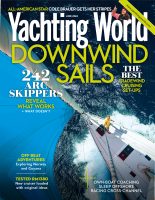
J Class: the enduring appeal of the world’s most majestic yachts
- October 9, 2023
Only ten J Class yachts were built before the Second World War stopped the movement in its tracks, but in the last 20 years these magnificent sloops have made an incredible comeback. Why has the J Class remained irresistable? David Glenn explains.

One of the most awe-inspiring sights in modern yachting is the Spirit of Tradition fleet blasting off the start line at the Antigua Classic Yacht Regatta. It happens every year at the end of April. Chances are it will include at least two J Class yachts, hitting the line on the gun at full tilt, exploding through the cobalt blue Caribbean rollers at anything up to 12 knots as they charge upwind.
Watching Velsheda , Ranger , Shamrock V and Endeavour will bring a lump to your throat, such is the emotion generated by these beautifully proportioned 130ft racing machines with their carbon rigs driving 170 tonnes of steel, aluminium and teak towards the weather mark. It’s heady stuff.
Watching them is one thing; racing quite another matter. In 1999 I was aboard the rebuilt Velsheda , taking part in the Antigua Classic Regatta. I had a single task as part of a four-man team – to tend the forward starboard runner. Nothing else. “Let that go once we’ve tacked and the whole rig comes down,” warned skipper Simon Bolt, as another wall of water thundered down the leeward deck and tried to rip me from the winch.
Dressed in authentic off-white, one-piece cotton boiler-suits, which had to be worn with a stout belt “so there’s something to grab if you go overboard”, they were tough, adrenaline-filled days out. God knows what it was like up forward as massive spinnakers were peeled and headsails weighing a quarter of a tonne were wrestled to the needle-sharp foredeck as the bow buried itself into the back of yet another wave. Sometimes you daren’t look.
But with the race won or lost, back on the dock the feeling of elation, fuelled by being part of the 36-strong crew aboard one of these extraordinary yachts, triggered a high like no other. You knew you were playing a role, no matter how small, in a legendary story that began in 1930, was halted by World War II and then defied the pundits by opening another chapter 20 years ago. Today with five Js in commission, all in racing trim, and at least two more new examples about to be launched, the J Class phenomenon is back.
Why is the J Class so popular?
Why does a yacht with an arguably unexciting performance – they go upwind at 12 knots and downwind at 12 knots – costing £20 million to build and demanding eye-watering running costs, seem to be burgeoning during the worst recession since the class was born?

There is no single answer, but you only have to look back to the 1930s and the characters that owned and raced the Js on both sides of the Atlantic, sometimes for the America’s Cup , to understand why the class occupies a special place in yachting history. Underlying everything is the look of the J Class. It seems to transcend any change in yachting vogue, displaying a timeless line with outrageous overhangs and a proportion of hull to rig that is hard to better.
They possess true elegance. There is no doubt that captains of industry who want to flex their sporting muscle have been drawn to a class which only the very rich can afford and there are distinct parallels between J owners in the 1930s and those of the past 20 years. The difference is that in the 1930s owners liked to shout about their achievements and hogged the pages of national newspapers. Today, they are as quiet as mice.
Origins of the J Class
The J Class emerged in 1930 and marked a quantum leap in yachting technology, but comprised a hotchpotch of design altered over many years.

The J Class – so named because it was the letter allocated to its particular size by the Universal Rule to which the yachts were built (K and M Class yachts were, for example, shorter on the waterline) – emerged in 1930 and marked a quantum leap in yachting technology.
The so-called Big Class, which flourished in the UK in the 1920s, was impressive, but comprised a hotchpotch of design altered over many years. Yachts like King George V’s Britannia , built in 1893 as a gaff-rigged cutter but converted in the 1920s to Bermudan rig to rate as a J, Candida , Cambria , White Heather and schooners like Westward were even larger and more expensive to run. But as the greater efficiency of the Marconi or Bermudan rig became apparent their days were numbered.
One catalyst for the J Class itself was legendary grocer Sir Thomas Lipton’s final crack at challenging for the America’s Cup in 1931. He did so under the Universal Rule with the composite, wooden-planked, Charles E. Nicholson-design Shamrock V .
It was the 14th challenge since 1851 and the Americans, despite the withering effects of the Great Depression, reacted in dramatic fashion, organising their defence with four syndicates, each bulging with millionaires, putting forward separate Js: Enterprise , Whirlwind , Weetamoe and Yankee , which apart from Enterprise had already been launched.
Key to the American effort was the remarkable Harold Vanderbilt of the New York Yacht Club, who had inherited fabulous wealth from the family’s railroad companies, making him one of the country’s richest men.
Brought up on the family’s Idle Hour estate on Long Island Sound, he was a keen and accomplished sailor, and he used American technology and teamwork to build a far superior J in Enterprise. The defence completely overwhelmed Lipton’s effort. The British press castigated Lipton’s lack of preparedness and old-fashioned attitude. Vanderbilt, who among other things is credited with inventing contract bridge, left no stone unturned. “Mr. Harold Vanderbilt does not exactly go boat-sailing because summer is the closed season for fox-hunting,” stated an acerbic critic in the British yachting press.
Later when Shamrock was owned by aircraft builder Sir Richard Fairey and was being used to train crew for another Cup challenge, Beecher Moore, a skilful dinghy sailor who was draughted aboard the J to try to sort her out, reported in Yachts and Yachting many years later: “We found that when we got on board it was very much like a well-run country house, in that the gentleman does not go into the kitchen and on a well-run J Class the owner does not go forward of the mast.”
J Class tactics: Britain vs USA
A look at the huge gap between the British and American J Class tactics and designs in the early years of the America’s Cup.

In the early days there was a yawning gap between the way the Americans and British approached the Cup and, for that matter, how they ran a yacht. Revolutionary metal masts, Park Avenue booms to improve sail shape (the British copied this American design with their ‘North Circular’ version), bronze hulls that needed no painting, superior sails, and campaigns that cost £100,000 even in those days, blew away the Brits. Lipton had spent just £30,000 to build and equip Shamrock .
In the second Cup challenge in Js, in 1934, Sir T. O. M. Sopwith’s first Endeavour , also designed by Nicholson and equipped with wind instruments designed by her aircraft industrialist owner, nearly won the Cup, snatching defeat from the jaws of victory after leading the series 0-2. Sopwith was also up against Vanderbilt, who this time sailed Rainbow , which many considered to be the slower boat. But the British campaign was hobbled by a pay dispute – Endeavour ’s crew got £5 a week but they wanted a raise for ‘going foreign’ – and the campaign approach was again brought into question when the first thing to be stripped off the yacht when they won a dispute over reducing weight was the bath!
Back in Britain, the 1935 season proved to be the zenith of J Class and Big Class racing, although by the end of it the Js were under the cosh for their tendency to lose masts. Five went over the side that year and Endeavour II , launched with en eye on the next Cup challenge, lost hers twice.
There was added spice in the competition off the shores of the UK with the arrival of the American J Yankee , now owned by millionaire and Listerine businessman Gerard Lambert, who enjoyed sparring with the Brits. But even Yankee lost her mast and the press rounded on the class for being dangerous and wasteful! That wasn’t enough to stop Sopwith, whose tail had been extracted from between his legs following the last defeat in Newport: Endeavour II was towed across the Atlantic in a veritable armada that included the first Endeavour. The British yachts found themselves up against the most advanced sailing machine the world had ever seen – Ranger , dubbed ‘the Super J’.
Vanderbilt was the man to beat again. Not only had he bankrolled the entire defence as American business remained beset by a struggling economy, but he used highly scientific means to perfect design. The brilliant naval architect Starling Burgess, who had designed for Vanderbilt throughout the 1930s, was now aided by the equally brilliant but considerably more youthful Olin Stephens. Between them they finally selected ‘model 77-C’ from six tank tested.
The yacht was considered ugly by some and not a natural to look at, but Vanderbilt’s team trusted the science (still the difference between the Americans and the Brits) and Ranger with her bluff or barrel bow and ‘low slung’ counter was the result. She proved to be dynamite on the race course and Endeavour II didn’t stand a chance. She was beaten in five straight races by large margins. The Americans and Vanderbilt had done it again. War then brought an end to an extraordinary era in yachting.
Only ten J Class yachts were built to the Universal rule and not a single American yacht survived. Most were scrapped for the war effort. In any case, the American way was to discard the machine once it has served its purpose. In Britain they faired a little better, and some Js were mud-berthed on the East and South Coasts. Two survived in the UK: Velsheda , originally built by the businessman who ran Woolworths in the UK (W. L. Stevenson named her after his daughters Velma, Sheila and Daphne), but which never challenged for the America’s Cup; and Endeavour , saved by becoming a houseboat on the Hamble. Shamrock ended up in Italy and survived the war hidden in a hay barn.
J Class resurgence
Seemingly resigned to the history books, the J Class made a triumphant return in the 1980s.
In his seminal book about the J Class, Enterprise to Endeavour, yachting historian Ian Dear predicted in the first edition in 1977 that the likes of the Js would never be seen again. By the time the fourth edition was published in 1999 he was quite happily eating his words!
The American Elizabeth Meyer was, without doubt, instrumental in bringing the class back to life when in the 1980s she extracted what was left of Endeavour from a amble mud-berth, began rebuilding her in Calshot, and then moved her to Royal Huisman in Holland, who completed the restoration superbly. With the transom of the original Ranger mounted on a bulkhead in her saloon, Endeavour is still regarded as one of the best-looking and potentially fastest Js.
She was owned briefly by Dennis Kozlowski, the disgraced tycoon who ran Tyco, who famously said: “No one really owns Endeavour, she’s part of yachting history. I’m delighted to be the current caretaker.” Unfortunately he ended up in prison and the State of New York became Endeavour’s ‘caretaker’ before they sold her to her current owner, who has kept the yacht in the Pacific. She’s currently being refitted in New Zealand.
Ronald de Waal is a Dutchman who until recently was chairman of the Saks Group in the USA and has made a fortune in clothing. He has dedicated a lot of time to improving Velsheda over the years since he had her rebuilt by Southampton Yacht Services to a reconfigured design by Dutch naval architect Gerry Dykstra. Ronald de Waal steers the yacht himself to great effect and has had some legendary tussles with Ranger, the new Super J built in Denmark for American realestate magnate John Williams.
The rivalry between the two is fierce and even led to a collision between the yachts in Antigua last year. But Velsheda would have been lost had it not been for British scrap-metal merchant Terry Brabant who saved her from a muddy grave on the Hamble and famously sold his Rolls-Royce to cast a new lead keel for the yacht. With very little modern equipment he sailed her hard in the Solent, chartering her and crossing the Atlantic for a Caribbean season, all without an engine! Without Brabant’s initiative Ronald de Waal wouldn’t have what he has today.
Shamrock V is owned by a Brazilian telecommunications businessman Marcos de Moraes who had the yacht rebuilt at Pendennis Shipyard in Falmouth in 2001. He tends to keep away from the race course but with a number of events being planned in the run-up to the 2012 London Olympics he might be tempted back. The latest new J to launch, Hanuman, a modern interpretation of Endeavour II, has recently entered the racing fray. She was commissioned by serial yacht owner Jim Clark (Hyperion and Athena), the American who brought us Netscape and Silicon Graphics, and who remains a colossus in Silicon Valley.
Hanuman, named after a Hindu deity, built by Royal Huisman and designed by Gerry Dykstra, has had no expense spared when it comes to rig and sail wardrobe. Last year she beat Ranger in the Newport Bucket but in March this year she lost out 2-1 to the same boat at the St Barths Bucket. They were due to meet again with Velsheda at the Antigua Classic Yacht Regatta in April. Another Dutchman, property developer Chris Gongriep, who has owned a number of yachts including Sapphire and Windrose of Amsterdam, has given the go-ahead for a new version of Rainbow, which is well advanced in Holland at Freddie Bloesma’s aluminium hull fabrication yard. The yacht, reconfigured by Gerry Dykstra, will be in the water in 2011 with a full-on race programme.
About to be launched is Lionheart, the biggest J so far, redesigned by Andre Hoek and built in Holland by Claasen Jachtbouw, after an extensive research programme. Unfortunately, her owner’s business commitments mean that he won’t be able to enjoy the fruits of this project – she’s for sale with Yachting Partners International and Hoek Brokerage. What an opportunity to join a class with such a remarkable history and one which looks destined to run and run!
First published on SuperYachtWorld.com on Aug 4, 2010

Welcome to the World of Model Yachting
Welcome aboard.
| Title | Date | Type |
|---|---|---|
| AMYA News | ||
| AMYA News | ||
| Eight Bells | ||
| AMYA News | ||
| Eight Bells | ||
| Bulletins | ||
| AMYA News | ||
| Regatta Results | ||
| Regatta Results | ||
| Regatta Results |
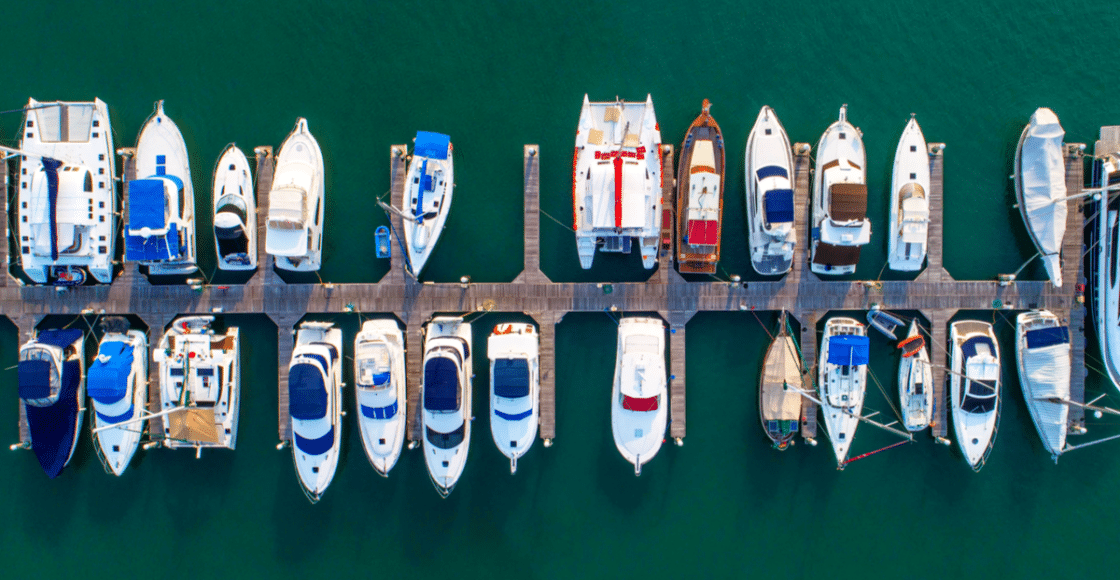
Types of Boats: A Complete Guide

Table of Contents
Last Updated on April 14, 2022 by Boatsetter Team
From canoes to the Maltese Falcon and beyond, private boats range from eight feet to megayachts, hundreds of feet in length. Used for fishing, cruising, living aboard, and as a means to get away from the beaten path, boats have been a part of the lives of humans since one decided a ride down the river on a log was pretty cool.
Boat designs have come a long way since the advent of the first dugout, but one thing remains the same. People like boats and have all manner of uses for them.
Rowboats to expedition yachts offer their owners the same thing: a day on the water pursuing a dream. Whether that dream is hooking a catfish at your local lake or chasing gamefish across the globe, people will find a way to get on the water.
How many different kinds of boats are there?
There are many types of boats, and their hull types include single and multihull, power, and sailboats.
Types of boats include:
Dinghies sail/power
Day sailors
Coastal cruising sailboats
Ocean-going sailboats
Pontoon Boats
Cabin Cruisers
Mega Yachts
Expedition Yachts
Boats range in size from as few as seven feet up to hundreds of feet in length and have classes that fit within their types. This information can help you understand how you can use a particular kind of boat.
What are the four classes of boats?
Separating boats into classes helps Federal and State authorities make it easy to determine how a particular boat is to be used. For example, a boat’s class determines the number of passengers it can carry. Thus, it also determines the number of flotation devices onboard for each occupant and other safety equipment necessary. These determinations are based on the class of boat, which puts your craft into a size range.
- Class A less than 16 feet
- Class 1 16 to less than 26 feet
- Class 2 26 feet to less than 40 feet
- Class 3 40 feet to less than 65 feet
- SRV (small research vessel) Boats of 65 feet in length, yet less than 300 gross tons fit this category.
What are the Categories of Boats
The European Union enacted the Recreational Craft Directive in 1998. It affected the designation of boat categories for boats built and sold there.
These design standards are for most boats that range in length from 8 to 79 feet, measure the seaworthiness of a vessel, and indicate a boat’s ability to manage certain wave heights and wind conditions.
A boat’s ability to range afar or stay near shore is determined by its hull strength, freeboard, stability, deck drainage, and reserve buoyancy. Any other criteria that might affect their seaworthiness are also noted when categorizing boats.

Category A – Ocean Class Boats:
Boats in this class are generally self-sufficient and designed for extended cruising into winds over Force 8, on the Beaufort scale (+ 40 Knots). They are built to take wave heights over 13 feet and are conditions that are not from a hurricane or typhoon.
Category B – Offshore Class Boats:
This class includes boats that operate offshore in Force 8 with winds up to 40 knots and seas up to 13 feet in height.
Category C – Inshore Class Boats:
This class encompasses boats that operate on lakes, rivers, coastlines, and large bays and includes boats that can stand up to Force six winds, 27 knots, and seas up to seven feet in height.
Category D – Coastal water, inland, and sheltered waters:
Boats in this class include those built for rivers and small lakes and are designed to stand up to Force 4 winds (11 – 16 knots) and wave heights of a foot and a half (18 inches).
Not all boats in the United States are built to these standards. However, you can rent a private fleet of boats in many areas of the world through Boatsetter. For example, these standards apply to many of the rentals in Europe. They also apply to vessels built in the United States by European manufacturers.
Boat classification can affect boat types, and knowing the capability of a boat based on its classification gives boat owners a better idea of the level of seaworthiness before setting off for the Caribbean.
What’s the difference between a ship and a boat?
An adage claims a ship can carry a boat, but a boat cannot take a ship. However, it is not quite that simple.
Many of today’s boats carry another boat. You can often see less than thirty-foot boats carrying kayak, or dinghy boats. Taking a small boat on your larger boat can help you get ashore in areas without dockage. However, does it make your thirty-footer a ship? No, it probably doesn’t; however, it expands its usability.
Boats for Lakes
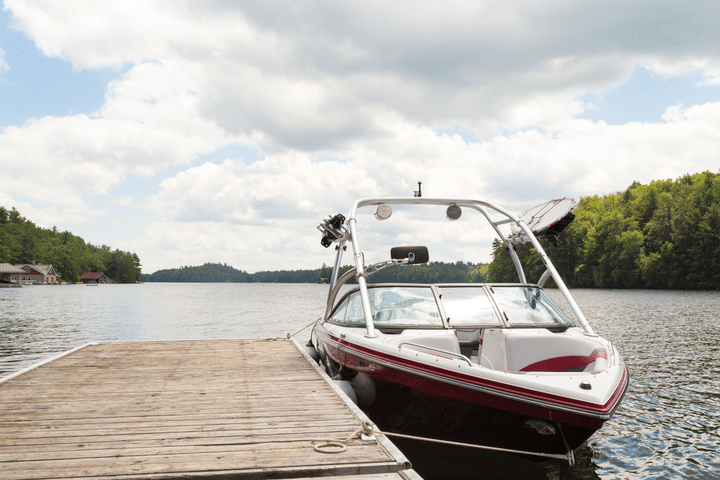
Lakes come in all sizes, as do the boats one needs to ply their waters. For example, suppose you are a boater whose playground is Lake Michigan. In that case, you will need a different boat than a boater who fishes Lake Okeechobee .
Small and shallow lakes don’t require big boats for your fishing and boating adventures. Bass boats, pontoon boats , outboard skiffs, and even rowboats are suitable for your needs.
However, if you are on a big, deep-water lake, your boat needs may be more similar to boats that spend time on the ocean . The deeper water of lakes allows for bigger waves and the need for bigger boats.
If you are a fair-weather boater, any small boat will do on the big lakes and the small. However, if you are a boater who wants to go fast, even if there’s a gale blowing, you will need more than a 25-foot powerboat, no matter how many outboards you strap to its transom .
Boats for Oceans
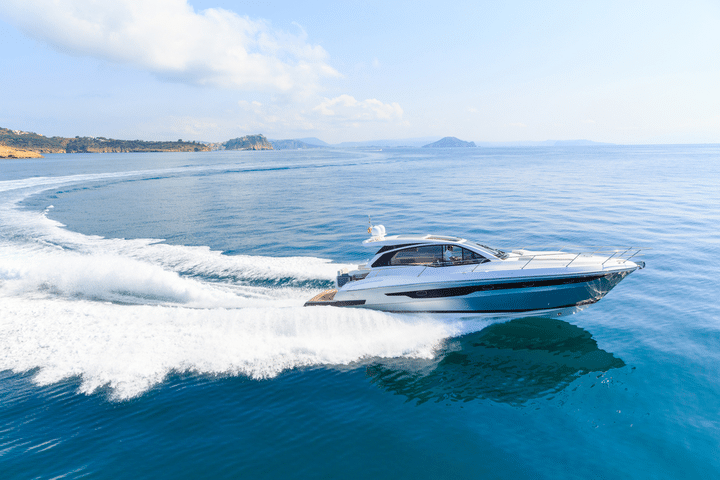
A boat of fewer than 12 feet crossed the Atlantic in 1987 , and its captain lived to tell about it. However, adventures such as that are
outside the desire of most boaters.
Power and sailboats are built for ocean-going, and most are over 30 feet in length. These ocean-going vessels include trawlers, sailboats, motorsailers, catamarans , game fisher boats, expedition yachts, and mega yachts.
Ocean-going boats usually have high sides and bows, deep V, or displacement hulls. Gas or diesel engines or sails can power them.
However, many offshore fishing boats are open center- console boats with multiple high-powered outboard or inboard engines. This abundance of power, usually on boats over 30 feet in length, can get them quickly to their fishing grounds. It also gives them the speed to outrun approaching storms if they need to make a run for home.
Specialty Boats for shallow water and big wakes
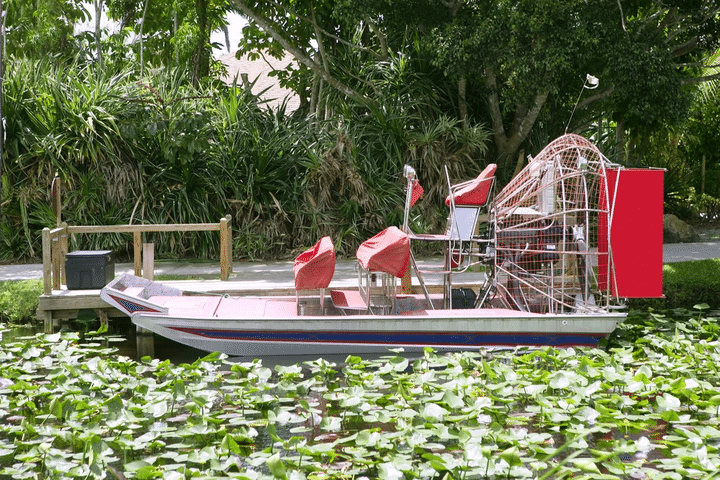
There is a particular class of boats designed for the shallows of lakes, rivers, and marshlands built to get into water that isn’t much more than ankle-deep. These vessels include airboats, flat boats, and johnboats with Gatortail mud motors.
They enable their owners to ease into backwaters where others can’t go in search of a prize catch. As a result, they are perfect boats for boaters who live near marshlands, swamps, rivers, and lakes.
Wake boats are designed to bog down and throw up a wake big enough to surf upon. They manage this feat by filling their hulls with water, making them very heavy, then plowing all that weight through the water with a powerful engine. The result is surf on demand.
What type of boat is best for you?
Only you know what you want and what you would like to do while on the water. Or, you may have an interest in boating and would like to explore its every facet. At Boatsetter, we give you access to one of the largest private fleets of boats, yachts, and small ships available in the world.
From jet skis to megayachts, the Boatsetter fleet delivers. Boat owners who live near you or in locations you would like to visit have their boats ready and awaiting your arrival. All you need to do is find the boat you want to rent, where you want to rent it, and set a date. So, whether you opt for a bareboat adventure or the luxury of a captain on your cruise, a Boatsetter rental can open your horizons to every type of vessel boating has to offer.

Boatsetter empowers people to explore with confidence by showing them a world of possibility on the water. Rent a boat, list your boat, or become a Boatsetter captain today.
Browse by experience

Explore articles
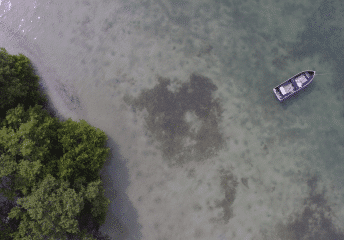
Islands in Tampa Bay

Costs of Boat Ownership: How Much Does it Cost to Buy & Own a Boat?
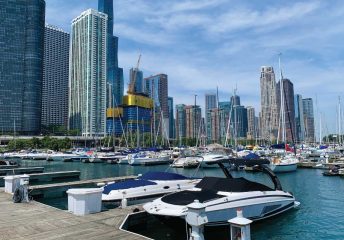
8 Best Chicago Marinas
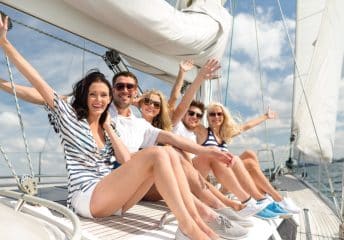
Host a Boat Party with These 9 Boat Party Theme Ideas
BoatUS Foundation Courses
Filter results by:, search by course name.
- Marine Electronics
- Clean Boating
- Pro Courses
- Boating Basics
Course Length
Pricing options.
- All Courses

Free Boating Safety Course
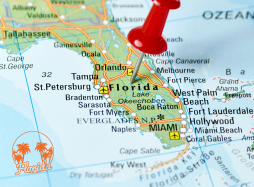
FL Temporary Certification

Cruising Boats & Systems
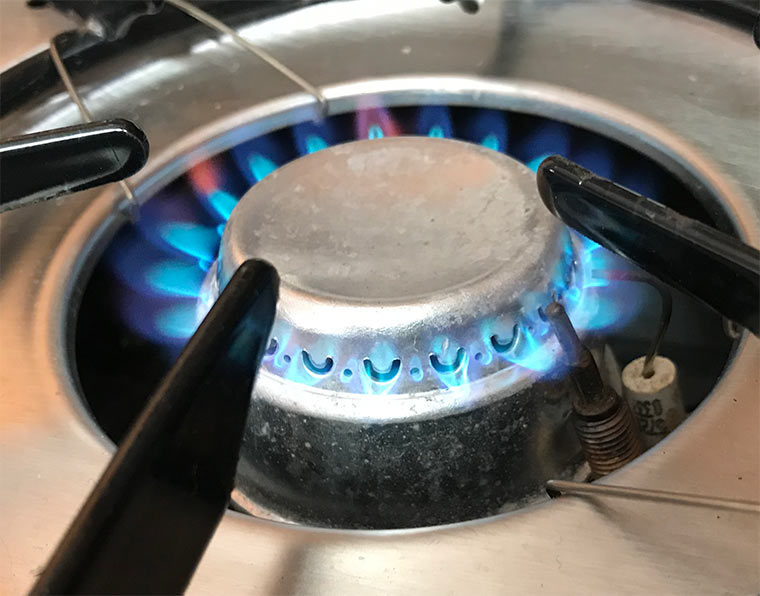
Propane Systems on Your Boat
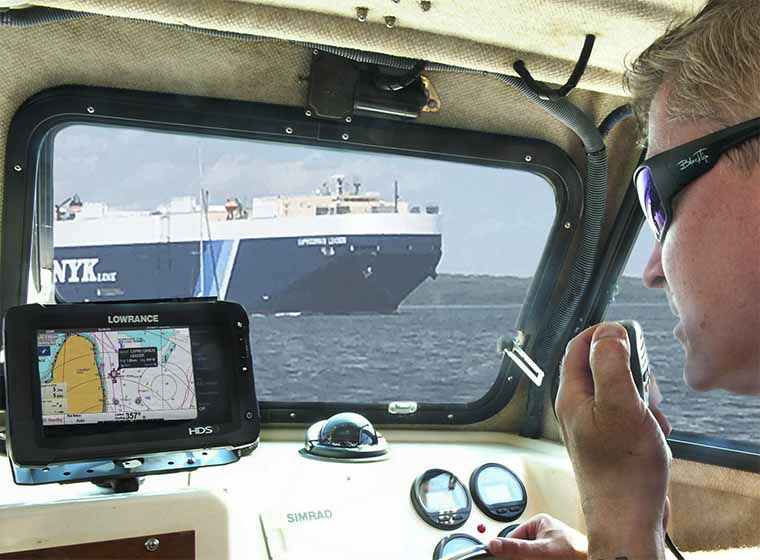
AIS for Boaters

How to Use GPS
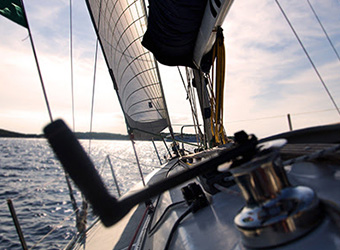
Sailing Lingo

Modern Marine Navigation
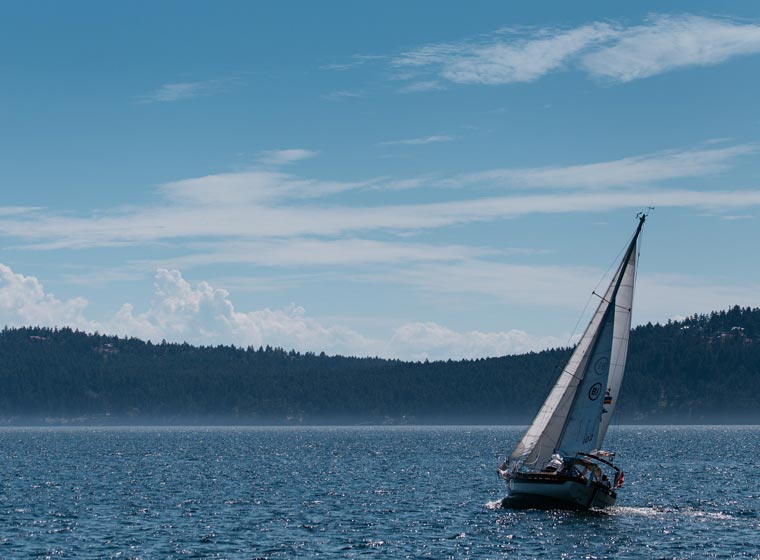
Planning Your Cruise

All About Marine Radio

Hurricane Preparation for Boaters
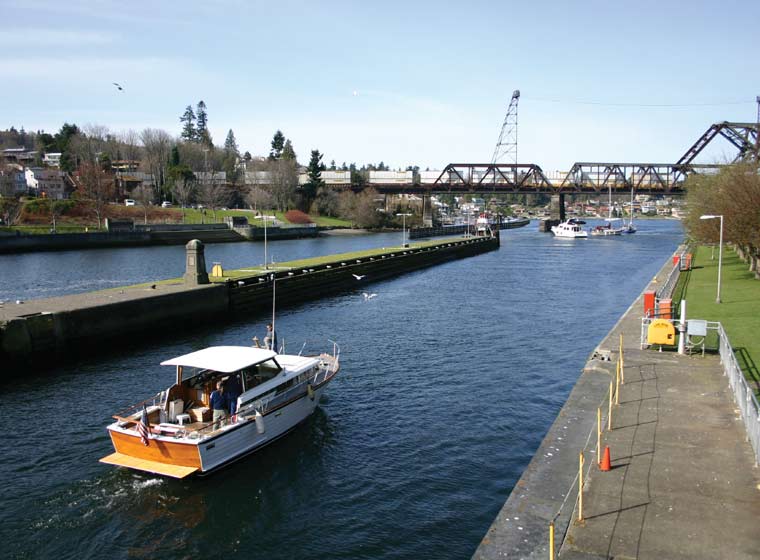
Boating On Rivers, Locks, and Lakes

Weather for Boaters

Learn to Sail

Crew at the Helm

Clean Boating Course
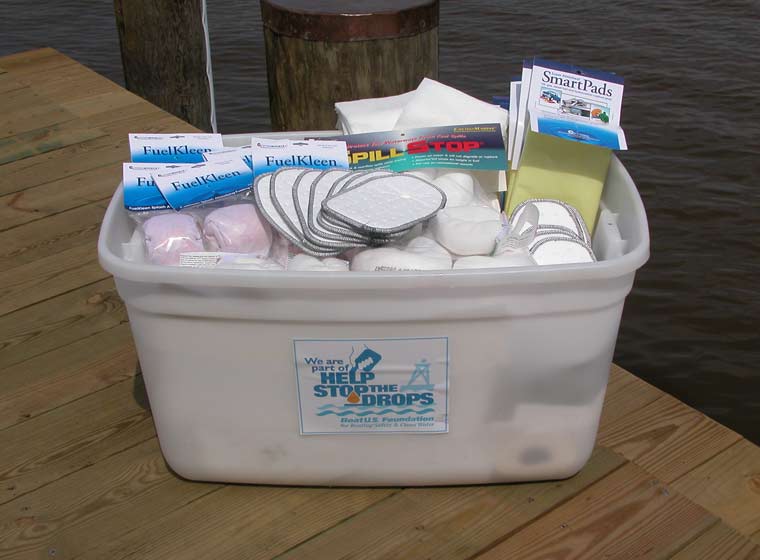
Spill Prevention for Marina Staff

Australia Orders Two More Guardian-Class Boats From Austal

Australia has ordered two additional Guardian-class patrol boats from Austal valued at 39 million Australian dollars ($26 million).
The new order comes in addition to the 22 boats previously ordered for the Pacific Patrol Boat Replacement Project , which was created to replace the Pacific Island Countries’ old Pacific Patrol Boats, which have been in service since as early as 1987.
The steel-hull boats will be constructed at Henderson, Western Australia, and are scheduled for delivery in 2026.
In-service support for the ships will be provided by Austal’s service center in Cairns.
Protecting the Pacific
The Guardian-class boats are used by countries such as Fiji and Samoa to bolster their maritime security , policing, and regional coordination missions in the Pacific Ocean.
They are also used to protect marine biodiversity and utilized in anti-illegal fishing activities in the region.
Each boat is fitted with an integrated rigid-hull inflatable boat stern launch system, which allows it to deploy smaller boats for high-security border patrols.
The 130-foot (39.5 meters) vessel can reach 23 miles (37 kilometers) per hour, and has a range of up to 3,500 miles (5,600 kilometers).
Subscribe to our mailing list
Related articles.
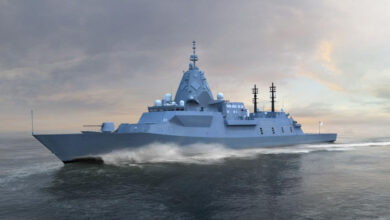
BAE Begins Construction of First Australian Hunter Frigate

Bollinger Delivers 57th Sentinel Cutter to US Coast Guard

Australian Military Demos Fractl Laser Weapon in Victoria

First Australian Navy Team to Train in US on AUKUS Submarine Ops

Australia Greenlights Life Extension Program for Collins Submarines

Australia Opens Arafura Patrol Vessel Training Hub on Garden Island
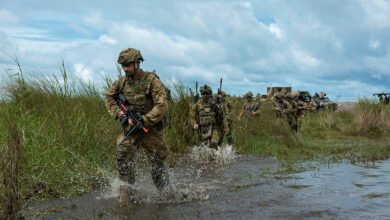
Short on Troops, Australia Opens Military to Non-Citizens

Australian Army to Finally Introduce ‘Owl’ Electric-Powered Suicide Drone

Australian Military Showcases Frontline-Deployable Hospital
Australia forms consortium to design nuclear submarine yard in osborne.

- 672 Wine Club
- Motorcycles
- Car of the Month
- Destinations
- Men’s Fashion
- Watch Collector
- Art & Collectibles
- Vacation Homes
- Celebrity Homes
- New Construction
- Home Design
- Electronics
- Fine Dining
- Dubai Tourism
- Gateway Bronco
- On Location – Olympic Games Paris 2024
- One&Only
- The Ritz-Carlton, Kapalua
- Saratoga Spring Water
- Wynn Las Vegas
- Sports & Leisure
- Health & Wellness
- Best of the Best
- The Ultimate Gift Guide
Dubai Emerges as a World-Class Destination for Luxury Yachts
State-of-the-art marinas and services cater to superyacht owners and other elite travelers..
- Share This Article

Related Stories
- The Ritz-Carlton Maui, Kapalua, Showcases Natural Beauty and Special Events
- Premium Seats and Hospitality Experiences for the Olympic Games Paris 2024 Are Still Available
- Beyond the Deal: Why Chartering a Private Jet Through XO Offers More Than Just Competitive Rates
Today there are 22 marinas and more than 3,600 berths for boats, including many for superyachts, megayachts, and gigayachts. To accommodate these vessels an array of modern maintenance and repair facilities has opened, along with technical support, specialty marine stores, and, notably, marina-based health and wellness centers that cater to yacht guests and crews.

The warm weather and safe, tranquil seas here, especially from October to April, provide extraordinarily pleasurable cruising conditions, all complemented by Dubai’s land-based attractions. The city is known for its scenic coastline, luxe hotels, cultural fare, and award-winning restaurants. Cruise-in, dock-and-dine opportunities are a new trend, offering the possibility to moor for a few hours while enjoying fine dining at a resort or hotel, a spa treatment, or the amenities of a beach club.
Luxe and well-equipped marinas abound. Among the newest and most popular are the following:
Dubai Harbour, which opened in 2020 with space for 700 vessels, is in the heart of Dubai, with easy access to tourist attractions and encompassing cafes, shops, VIP lounges, and the Dubai Harbour Yacht Club.
Nakheel Marinas Dubai Islands was launched in 2023 along the city’s north coast, offering easy cruising to the open sea; it can accommodate 13 superyachts at a time.
Luxurious and picturesque P & O Marinas has a total of 1,200 wet berths and 600 dry berths and includes well-known Mina Rashid, which can host a range of pleasure craft, plus superyachts between 25 and 160 meters.
Located on the prestigious Jumeirah Bay Island, along a promenade that resembles a Mediterranean village, Bulgari Marina & Yacht Club is a superyacht anchorage that includes berths for vessels from 10 to 40 meters as well as dock-and-dine services.
Also noteworthy are Bay Marina, Dubai’s first dedicated superyacht marina, with berths for vessels up to 160 meters; Palm View Marina, located on the Dubai Harbour seafront, which boasts a lively shoreside walkway; and Nakheel Marinas on Palm Jumeirah, which welcomes a range of sailing vessels with 261 berths in two marinas plus luxury yacht services.
Dubai’s busy winter-season calendar is filled with international events that appeal to yacht owners and other high-end travelers. The Dubai Desert Classic, Dubai Duty-Free Tennis Championships, Emirates Dubai Sail Grand Prix, Emirates Dubai 7s rugby, and Dubai World Cup horse racing are just a few of the must-see tournaments for sports aficionados. On the cultural scene, there are Art Dubai, Dubai Watch Week, DIFC Art Nights, and World Art Dubai. High-profile maritime expositions that showcase the latest in yacht design, technology, and luxury include the Dubai International Boat Show, which celebrated its 30th anniversary earlier this year, and the three-day Gulf Superyacht Summit 2024, coming in November.
As Dubai has grown as a world-class yachting destination, the city has also focused on sustainability of its rich marine environment through collaborations and green marina initiatives with the aim of promoting responsible yachting and protecting the ocean’s biodiversity. Ensuring the health of the seas is a crucial element in maintaining Dubai’s importance to the luxury yachting community now and for generations to come.
2 rescued from sinking boat in Haulover Inlet; no injuries
HAULOVER BEACH, FLA. (WSVN) - First responders came to the rescue of two people from a sinking boat in the Haulover Inlet.
Miami-Dade Fire Rescue’s Ocean Rescue lifeguard units rushed to get the boaters to safety, just after 1:20 p.m., Saturday.
Video posted on social media by Only in Dade showed one of the boaters jumping into the water.
Rescuers used a board to get the pair to safety. No one was hurt.
Copyright 2024 Sunbeam Television Corp. All rights reserved. This material may not be published, broadcast, rewritten or redistributed.
- A new airport could spark the economy in a rural part of Florida. Will the workforce be ready?
- SWAT standoff in Fort Lauderdale ends with 1 subject in custody
- Investigation underway after BSO deputy takes life in Homestead
- 1 killed, 3 hospitalized after Turnpike crash in SW Miami-Dade
- Women may be required to register for the draft

- Find A School
- Certifications
- North U Sail Trim
- Inside Sailing with Peter Isler
- Docking Made Easy
- Study Quizzes
- Bite-sized Lessons
- Fun Quizzes
- Sailing Challenge

The Importance of Planning Where to Put Your Boat for a Hurricane
By: Carolyn Shearlock online course , Weather
Can your boat survive a direct hurricane hit? Absolutely. Our boat has weathered two direct hits—Hurricanes Marty (Cat 1, 2003) and Irma (Cat 4, 2017)—with minimal damage. Additionally, it has been within 50 miles of the center of at least a dozen other storms.
Since 2003, I’ve studied why some boats survive hurricanes with minimal damage while others – not so far away – are totaled. I’ve learned that choosing the right place to put your boat and then ensuring that she stays there are keys to having your boat survive a hurricane.
Too many boaters don’t make a conscious decision about where they’ll put their boat if a hurricane is forecast for their area. Articles on hurricane prep often focus on securing the boat but not on choosing a safe location initially. All the preparation is futile if the spot isn’t safe to begin with. It’s essential to make an informed decision about where to place your boat well before a storm is forecast as it can significantly increase the chances of your boat surviving a hurricane with minimal damage.
I see the same thing with hurricane plans required by insurance companies: they ask where the boat will be kept, but rarely about why that location was chosen or what features make it a good choice. Then they ask for the details of how the boat will be prepped. When insurance companies discuss location, they talk about broad geographic locations, such as “north of the Florida/Georgia line” or “not above 12⁰ N.”
And yet, in storm after storm, we see almost total destruction of boats in one marina or boatyard while boats just a mile or two away largely survived.

It’s not just luck.
It’s possible to predict which places will fare best.
We tend to think of hurricanes as being about wind, since that’s how they are classified. Actually, they’re a combination event of wind, waves, surge, rain, and debris. All of these must be considered when picking the spot for your boat, along with factors like ability to get there and evacuation options.
The more information you have about various possible places in your area, the better decision you can make. Don’t just rely on a friend’s assessment or photos on a website. Look at everything to see how protected or open the location is to damage from each of the damaging forces:
Each site has its pros and cons. No single factor outweighs the others. It’s the combination of protections that will determine your boat’s safety, considering the specific storm’s details. For instance, a location might be well-protected from wind but vulnerable to storm surge. Balancing these factors is key to selecting the best spot.

Decide on the best location for your boat long before a storm is forecast. Choose your spot, know how long it takes to get there, program the route into your navigation system, and do the same for a backup location. This preparation ensures you can act quickly and efficiently when a storm approaches.
Want to learn more about how to assess various locations – boat yards, marinas, anchorages, and other options – for their ability to protect your boat in a hurricane?
Join hurricane prep expert Carolyn Shearlock for an in-depth step-by-step blueprint for everything storm-related, from choosing your spot and how to make sure your boat stays there, to weather watching and dangers after the storm. She’ll be leading Hurricane Readiness: A Blueprint for Boaters , an American Sailing online course, on July 18 at 4:30 PM Pacific, 7:30 Eastern. In it, you’ll see over 150 photos to show exactly what to look for and do, and get four downloadable documents including a checklist to use when assessing various locations to put your boat.
Hurricane Readiness: A Blueprint For Boaters
LIVE ONLINE CLASS · THU JULY 18, 2024
Course Highlights
In “ Hurricane Readiness: A Blueprint For Boaters ,” Carolyn will explain how to effectively prepare your boat for a hurricane to increase your boat’s chances of surviving a storm.
Topics Covered:
- Choose the best location for your boat.
- Gather the proper supplies ahead of time—no last-minute scramble.
- Watch the weather and understand the fine points of the forecasts.
- Assess the risks and implications of hurricane season.
- Prepare a comprehensive hurricane plan both for yourself and your insurance company.
- Develop detailed hurricane checklists.
- Know when to stop monitoring forecasts and start preparing.
- Execute your plan with step-by-step guidance.
- Stay safe during preparation and in the aftermath.
Learn how all of your decisions and actions work together to influence what happens to your boat should a hurricane hit—not just the “big things” from a “Top 10 Tips” article, but all the little details that can make a crucial difference. As Carolyn says, “There’s no single trick to keeping a boat safe; it’s the sum of all the precautions you take. You need to learn and implement them all.” This course will equip you with the exact knowledge needed to prepare and execute a comprehensive hurricane plan tailored to your specific situation.

About The Author: Carolyn Shearlock is a seasoned sailor with extensive experience in hurricane preparedness for boats. Having weathered two direct hits from hurricanes, she has dedicated herself to understanding why some boats survive storms with minimal damage while others do not. Since 2004, Carolyn has been sharing her expertise and practical advice with the boating community, helping countless boaters protect their vessels from hurricane damage.
Learn More At www.TheBoatGalley.com
Don’t Miss American Sailing’s Upcoming Online Class
HURRICANE READINESS: A BLUEPRINT FOR BOATERS • HOSTED BY CAROLYN SHEARLOCK

THU JUL 18 • 4:30PM PT HURRICANE READINESS: A BLUEPRINT FOR BOATERS Learn how to prepare your boat for hurricanes with proven strategies and detailed planning.
Related Posts:

- Learn To Sail
- Mobile Apps
- Online Courses
- Upcoming Courses
- Sailor Resources
- ASA Log Book
- Bite Sized Lessons
- Knots Made Easy
- Catamaran Challenge
- Sailing Vacations
- Sailing Cruises
- Charter Resources
- International Proficiency Certificate
- Find A Charter
- All Articles
- Sailing Tips
- Sailing Terms
- Destinations
- Environmental
- Initiatives
- Instructor Resources
- Become An Instructor
- Become An ASA School
- Member / Instructor Login
- Affiliate Login
Fiji works to recover patrol boat that ran aground after being gifted by Australia
A mission to salvage a boat that ran aground on its maiden voyage after Australia gifted it to Fiji has begun, with efforts underway to minimise any environmental impacts including a potential oil spill.
Fiji's navy said on Saturday that favourable weather conditions would assist the recovery of RFNS Puamau, which hit a reef on Fiji's remote Lau group of islands on Monday, during its first patrol.
It said in a statement that Australia had sent specialised recovery equipment that would be used to extract the boat from the reef, with a second vessel set to transport the gear to the site.
"The Republic of Fiji Navy reaffirms its commitment to minimising environmental impact during the de-fuelling process now underway," it said.
"Measures to mitigate a potential oil spill have been deployed, and navy divers and engineers on scene continue to monitor the situation."
The crew of RFNS Puamau returned to Suva after being collected by another vessel, RFNS Savenaca, on Saturday morning.
There are no reports of injuries due to the grounding incident but the extent of the damage to the boat remains unclear.
The event is a major embarrassment for Fiji's navy, which accepted the vessel at a ceremony in Perth in March.
The Guardian-class patrol boat is a popular choice with Pacific countries, with many using them to survey and protect vast marine zones.
As part of the Pacific Maritime Security Program, 19 boats have been so far handed over to Pacific nations.
However, the Australian government has admitted the boats are flawed, with Pacific Minister Pat Conroy revealing the vessels have some defects including potential exhaust issues.
Two of the Guardian-class boats were destroyed by cyclones that hit Tuvalu last year.
Another boat was gifted to Samoa after another Guardian-class boat was damaged beyond repair there in 2021.
- X (formerly Twitter)
Related Stories
Navy boat gifted by australia to fiji stranded on reef after maiden voyage.
- Environmental Impact
- Maritime Accidents and Incidents
‘No simple accident’: Family blames boat driver for death of woman being pulled in inner tube
PORTLAND, Ore. (KPTV/Gray News) - The family of a 24-year-old Oregon woman is blaming a boat driver for her death, saying she was thrown into the side of another boat while being pulled in an inner tube.
Aliyah Seidel lost her 24-year-old sister Kaileigh Seidel on Saturday in an incident on the Willamette River. The young woman had gone out with a friend and a few people she didn’t know as well, KPTV reports .
“She was very spontaneous and loved to have fun. She got invited out on a boat, and she had no idea that that would be the last day of her life,” Aliyah Seidel said.
Kaileigh Seidel’s aunt, Rachelle Hunsperger, says water was familiar territory for her niece, who had experience whitewater rafting. But on this trip, she was riding in an inner tube being pulled by a boat. Her family says when things got dangerous, she had no control.
“There was some very erratic and unsafe driving on the boat,” Hunsperger said.
Kaileigh Seidel’s friend told Hunsperger that the driver of the boat was whipping back and forth through the river and made one turn too fast. The 24-year-old was thrown into the side of another boat and died of her injuries in the hospital that night.
Hunsperger says the incident happened as Kaileigh Seidel was pleading for the driver to stop.
“That just seems so unlike her. She was always like, ‘Let’s go. Let’s have fun.’ If she was telling somebody to slow down, then she was probably scared,” Hunsperger said. “This was no simple accident. I feel that there is somebody definitely at fault, and hopefully, that comes out.”
Aliyah Seidel describes her sister as a great friend and dog mom who made everyone around her feel loved. She says she used to tease Kaileigh Seidel for being loud.
“She was so innocent and taken so violently because of someone else’s decision to be reckless,” Aliyah Seidel said. “We definitely feel her not being there. It’s a hole in all of our hearts because it’s so much more quiet.”
As they mourn, Kaileigh Seidel’s relatives are finding comfort in reading the memories of her that people are sharing on a GoFundMe set up to help with funeral expenses.
“It’s just a great reminder to love the people that are in your life and just let them know how much you love them,” Aliyah Seidel said.
“She made impacts all over the place, and it warms my heart. I have a serious hole in my heart, but this feels like it helps,” Hunsperger said. “You never know when someone’s going to make a careless decision or a mistake, and they can be taken away from you forever. Hold them close.”
The Multnomah County Sheriff’s Office is investigating the incident, and so far, no arrests have been made. They say they are still talking to witnesses, and “once the facts are clear,” they will determine if any criminal charges will be filed.
Copyright 2024 KPTV via Gray Media Group, Inc. All rights reserved.

Ford recalls over 550,000 pickup trucks because transmissions can suddenly downshift to 1st gear

Pride Cheyenne to host 2nd Annual Pride Street Fest

Douglas resident charged in Sunday’s fatal rollover crash

Two 15-year-olds identified and charged in Bobby Maher Jr.’s death

Arrest made in Coin Shop double homicide case
Latest news.

Amber Alert canceled for 2-year-old child in New Jersey

FACT FOCUS: Here’s a look at some of the false claims made during Biden and Trump’s first debate

Highlights from historical presidential debate

Heat and fire in South, severe storms impact northern US

Harris acknowledges Biden had a ‘slow start’ in debate and tries to calm Democratic fears

COMMENTS
Maintaining a yacht in class requires regular surveys by qualified engineers and surveyors. Large yachts: Applicable rules and certificates. Private yachts. The mandatory requirements for these boats are very light. For the majority of flag states, a registration survey and a tonnage measurement, carried out by an authorised surveyor, are ...
Classes of boats and types of boats are two different things. Every type of boat fits into one of four classes of boats. While a type of boat can vary significantly in appearance and function, class is easy to understand. Boat classes are all determined by the overall length of…
"Class D" Boats are vessels that can safely handle winds of 13-15 MPH and waves between 1-2 feet or less in sheltered waterways.Note: any vessel below Class B is referred to as a boat, hence the difference. Waters of Operation And Accommodations. Yachts, from their inception, have been constructed to endure lengthy voyages on open water.
Demystifying yacht classification : Class A, B, C and D. Since 1998, CE certification is required for all recreational boats entering or being sold in Europe obliging boat manufacturers to respect certain building and security standards. Therefore, yachts ( boats ) are classified into four categories depending on their aptitude to confront ...
Posted on 11 July 2023 by Guy Bolduc in Non classé. Understanding the Classification of Yachts A, B, C and D: Since 1998, Europe (EEC) classifies yachts according to 4 categories A or B or C or D and this is a law. In order to sell a boat in the large territory of the EEC, it must be classified with a plate that mentions its classification and ...
Owners moving from smaller yachts into those over roughly 80 feet will quickly learn a new alphabet: ABS, DNV, BV, LR, RINA, and more. These are organizations that set rules governing the construction, maintenance, and operation of yachts. Called "classification societies," there are 13 members of the International Association of ...
INTRODUCTION TO YACHTS CLASSES Classification. Rules are developed to establish standards for the structural strength of the large yacht's hull and its appendages, and the suitability of the propulsion and steering systems, power generation and those other features and auxiliary systems which have been built into the ship to assist in its operation, and even pollution protection systems.
Yacht owners guide to Classification Societies. 21 January 2015 • Written by Benjamin Maltby. Alysia was built specifically for charter and complies to SOLAS. She can carry up to 36 passengers and is over 500GT. Classification societies (also known as 'class' societies) make an important contribution to maritime safety.
The CE Yacht Compliance Classification System is the European (CE stands for "Conformité Européenne" in French) dictating the standards for CE Certification for construction and sale of boats.Vessels in one of the categories of controlled products cannot be legally sold in the EU unless they have passed the tests to receive the CE Certification.
Yachts are said to be 'in class' when the classification society believes that its rules and regulations have been complied with, unless it has granted a special dispensation from compliance for a particular aspect. In order to decide whether a vessel should achieve in-class status surveyors appraise design, surveys and reports on the ...
List of sailing boat types. A Windmill sailing dinghy. The following is a partial list of sailboat types and sailing classes, including keelboats, dinghies and multihull ( catamarans and trimarans ).
When narrowing your choices, there are two main yacht types on offer: motor and sail and each type has its unique properties to offer. Traditionally, motor yachts have more space and stability and are a popular choice for families or larger groups, while sailing yachts have the same high levels of luxury but are well suited to those who like ...
The 4 Boat Classes. Boats are divided into 4 classes: Class A, Class I, Class II and Class III. The only feature used to appoint a boat's class is its length. Class A. A Class A boat is any boat whose total length is under 16 feet. Types of Boats. Boats that meet this classification include: Dinghies; Canoes/Kayaks; Small Fishing Boats ...
The J Class - so named because it was the letter allocated to its particular size by the Universal Rule to which the yachts were built (K and M Class yachts were, for example, shorter on the ...
Our official classes of racing yachts cover the range from one foot to eight feet in length and from high tech developmental boats to affordable one-designs. There really is something for every taste and skill level. The advantages of sailing a recognized class boat are the community of like-minded skippers and the depth of technical ...
World Sailing Classes - Details of boat classes, their specifications, statuses, hull types, champions and events
Category B - Offshore Class Boats: This class includes boats that operate offshore in Force 8 with winds up to 40 knots and seas up to 13 feet in height. Category C - Inshore Class Boats: This class encompasses boats that operate on lakes, rivers, coastlines, and large bays and includes boats that can stand up to Force six winds, 27 knots ...
J Class yachts Velsheda, Topaz and Svea downwind legs. The J Class is one of several classes deriving from the Universal Rule for racing boats. The rule was established in 1903 and rates double-masted racers (classes A through H) and single-masted racers (classes I through S). From 1914 to 1937, the rule was used to determine eligibility for ...
The BoatUS Foundation offers the only FREE online boating safety course developed specifically for your state. We also offer a wide range of advanced courses that will help you gain the knowledge to make you confident in any boating situation you encounter.
The Raptor-class patrol boat, Russian designation Project 03160, is a series of Russian high-speed coastal patrol boats.Boats of the class belong to the 4th rank [clarification needed] ships in the Russian Navy.This project was developed by the design bureau of JSC Leningrad Shipyard Pella on the instructions of the Russian Navy.
Australia has ordered two additional Guardian-class patrol boats from Austal valued at 39 million Australian dollars ($26 million). The new order comes in addition to the 22 boats previously ordered for the Pacific Patrol Boat Replacement Project , which was created to replace the Pacific Island Countries' old Pacific Patrol Boats, which have ...
Today there are 22 marinas and more than 3,600 berths for boats, including many for superyachts, megayachts, and gigayachts. ... Dubai Emerges as a World-Class Destination for Luxury Yachts
HAULOVER BEACH, FLA. (WSVN) - First responders came to the rescue of two people from a sinking boat in the Haulover Inlet. Miami-Dade Fire Rescue's Ocean Rescue lifeguard units rushed to get the ...
Related Posts: Hurricane Readiness: A Blueprint for Boaters Join expert Carolyn Shearlock in this comprehensive online class to learn how to prepare your boat for hurricanes. With 17 years of experience, Carolyn's proven strategies cover everything from pre-season planning to post-storm safety, ensuring your boat's best chance of survival in hurricane-prone areas.
The Guardian-class patrol boat is a popular choice with Pacific countries, with many using them to survey and protect vast marine zones. As part of the Pacific Maritime Security Program, 19 boats ...
Climate. Bratsk has a subarctic climate ( Köppen climate classification Dfc ). Winters are very cold and long with average temperatures from −23.4 °C (−10.1 °F) to −15.7 °C (3.7 °F) in January, while summers are mild to warm with average temperatures from +13.3 °C (55.9 °F) to +23.8 °C (74.8 °F) in July.
The 15 registered teams include Deep Silence from Sialia Yachts, one of the largest full electric propulsion boats available on the market; and two hydrogen-powered boats, Madblue marine P-01 and ...
"There was some very erratic and unsafe driving on the boat," Hunsperger said. Kaileigh Seidel's friend told Hunsperger that the driver of the boat was whipping back and forth through the river and made one turn too fast. The 24-year-old was thrown into the side of another boat and died of her injuries in the hospital that night.
Skip to main content. Discover. Trips
Bowling Alleys. Write a review. Be the first to upload a photo. Upload a photo. Suggest edits to improve what we show. Improve this listing. Revenue impacts the experiences featured on this page, learn more. The area. Deputatskaya, 32, Bratsk 665708 Russia.